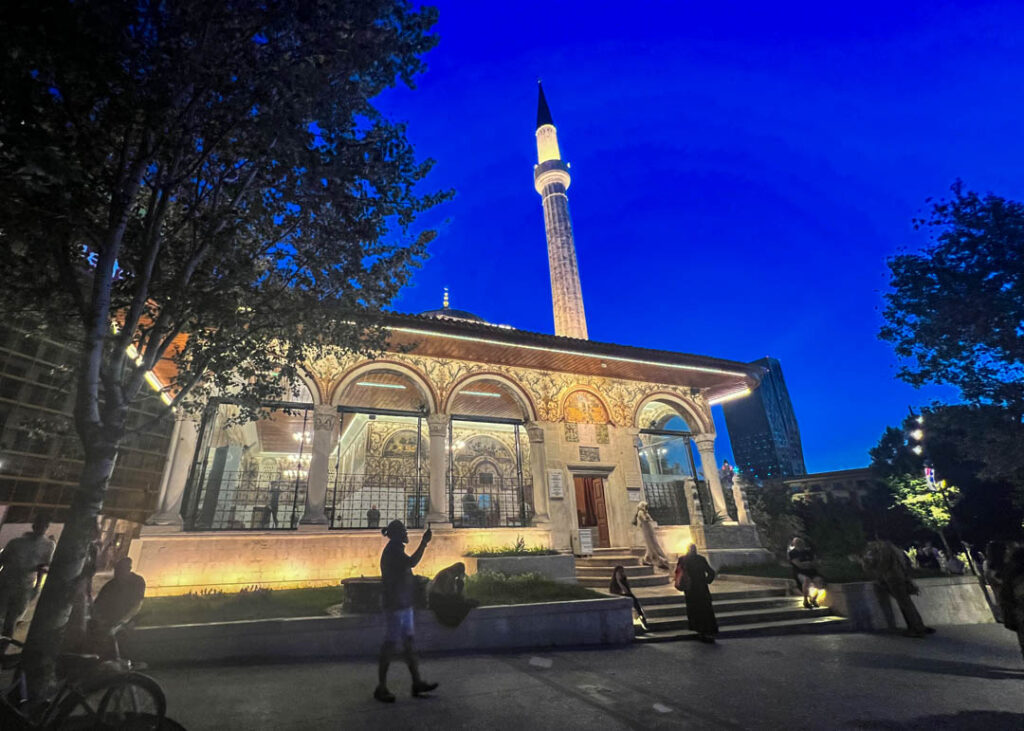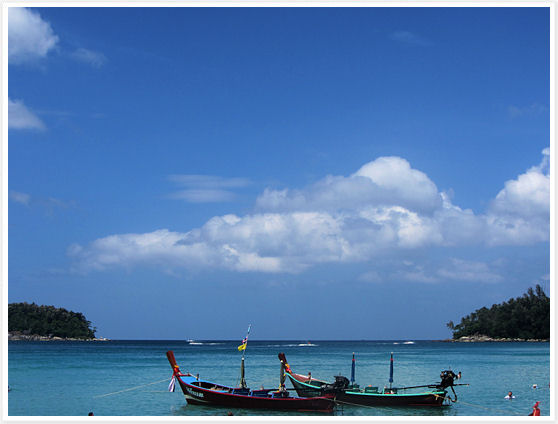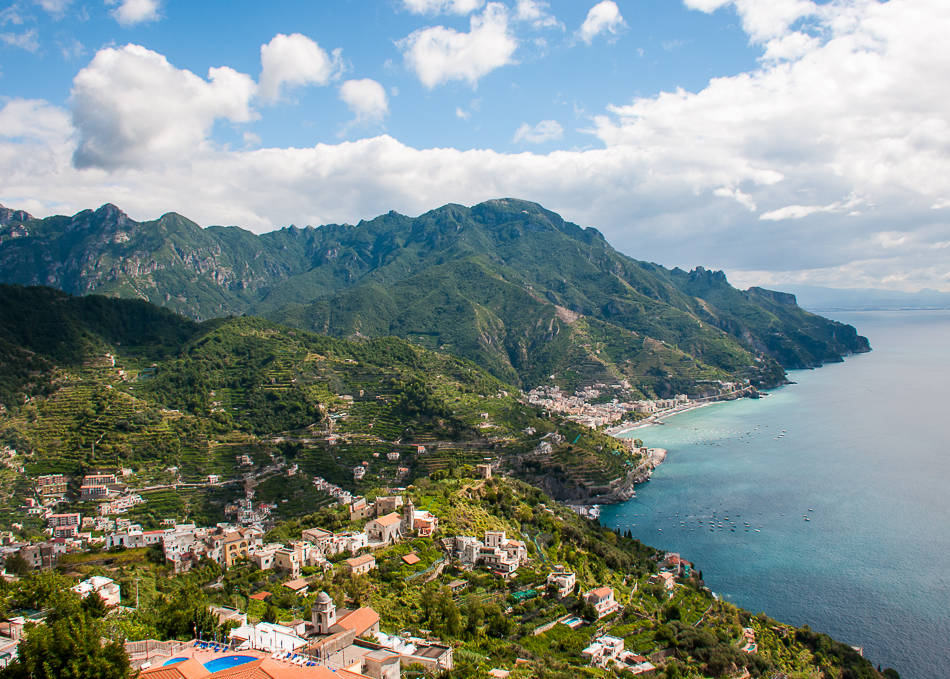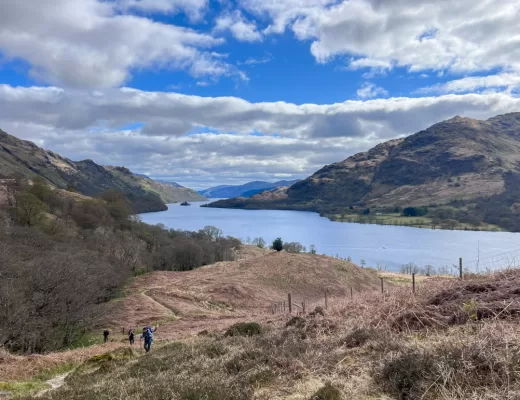Probably one of the most underrated countries in Europe at the moment, Albania is sure to surprise and delight. With a captivating mix of complex history, youthful and quirky culture, and untouched nature, now’s the time to head over there before the crowds come to their senses (!).
Get your intro to this Balkan country in its capital, Tirana – the best place to witness the incredible transformation this wrongfully labeled “post-communist backwater” has been experiencing lately. Although a fairly new capital (1920), you can clearly see the marks of its complicated past from the Ottomans to the Italians and finally the communist era across the city. Start in its very center, Skanderbeg Square, named after the national hero of the country.
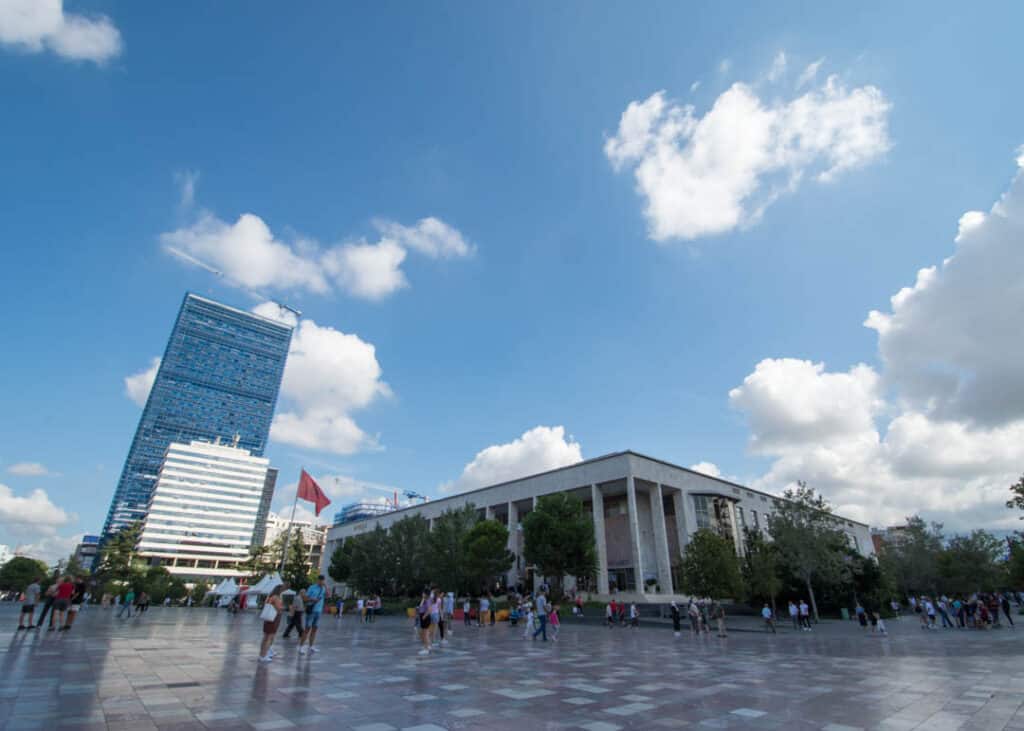
Grab a seat at one of the cafes to take in the scene (the Palace of Culture has good ones overlooking the plaza).
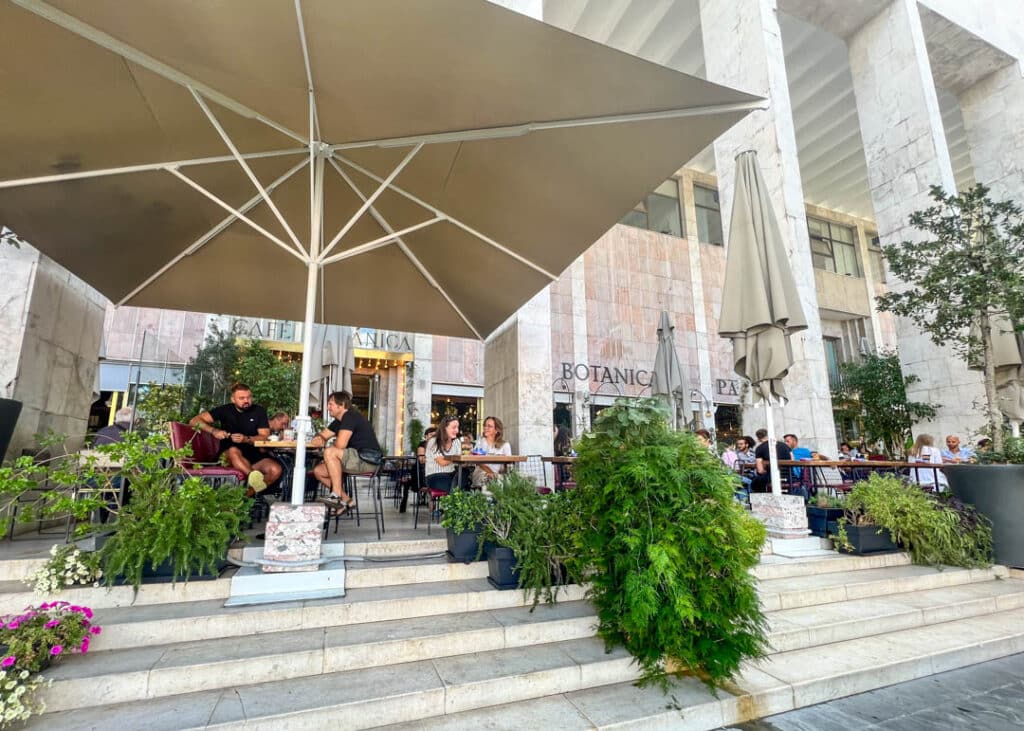
Albania’s cafe culture is strong and wonderful. You’re guaranteed a great cup of coffee (cue the Italian invasion of the mid 20th century) and a myriad of pastries wherever you go. Traditional dishes are mixed in the menu and worth trying as it’s unlikely you would get a chance to see them outside of Albania. A lot of them are based on soured goat or sheep’s milk which is part of many traditional Albanian dishes, like in this breakfast dish of trahana – a soured milk soup with bread and cheese.
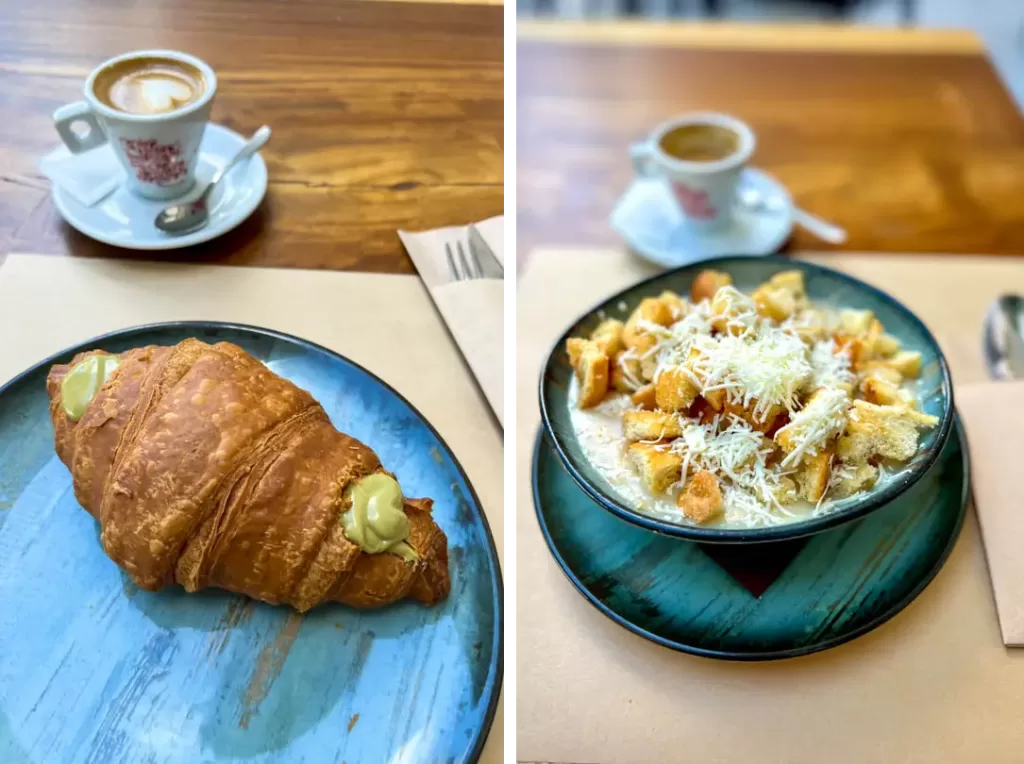
You’ll likely pass through this square an innumerable amount of times while in Tirana to get to another part of town, join a walking tour, or visit one of the many attractions around its periphery. From every corner you can see centuries old buildings and modern high rises in a tableau that may appear strange at first but endearing once you start to get to know the city a bit better.
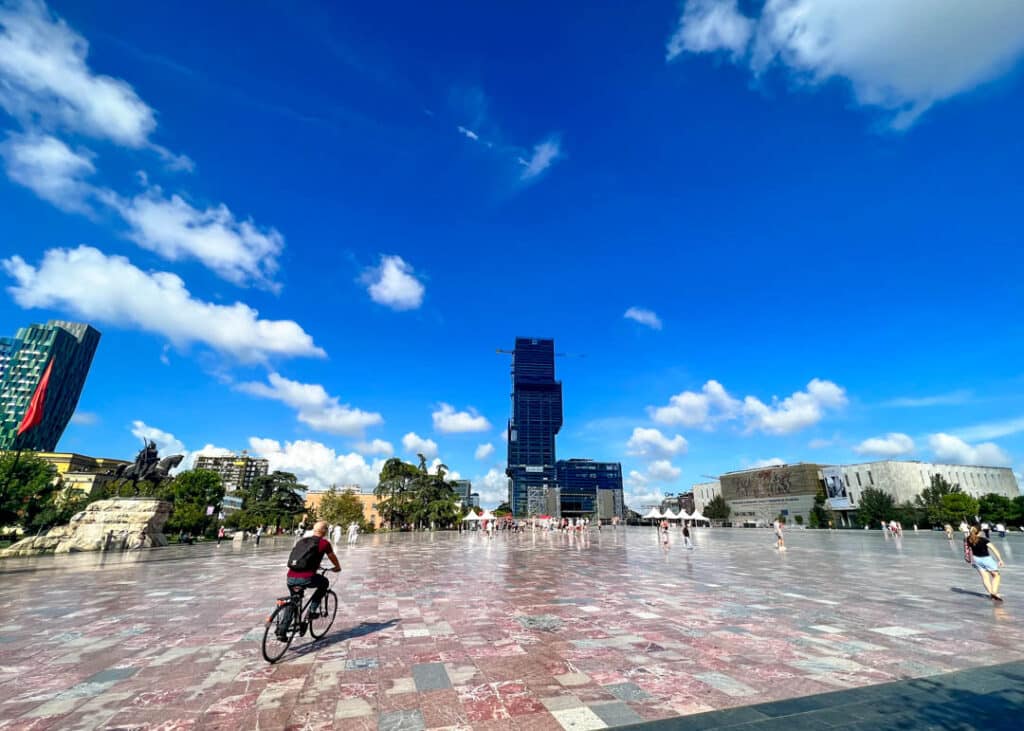
Say hi to Skanderbeg, the country’s national hero who led the rebellion against the Ottoman Empire in the 15th century.
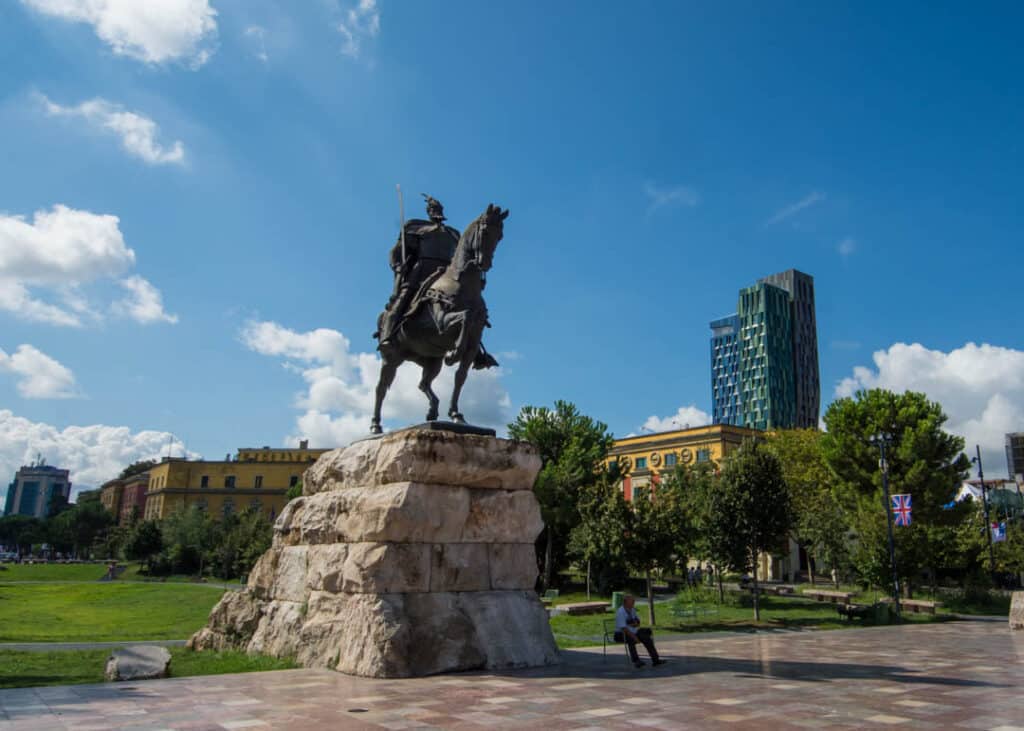
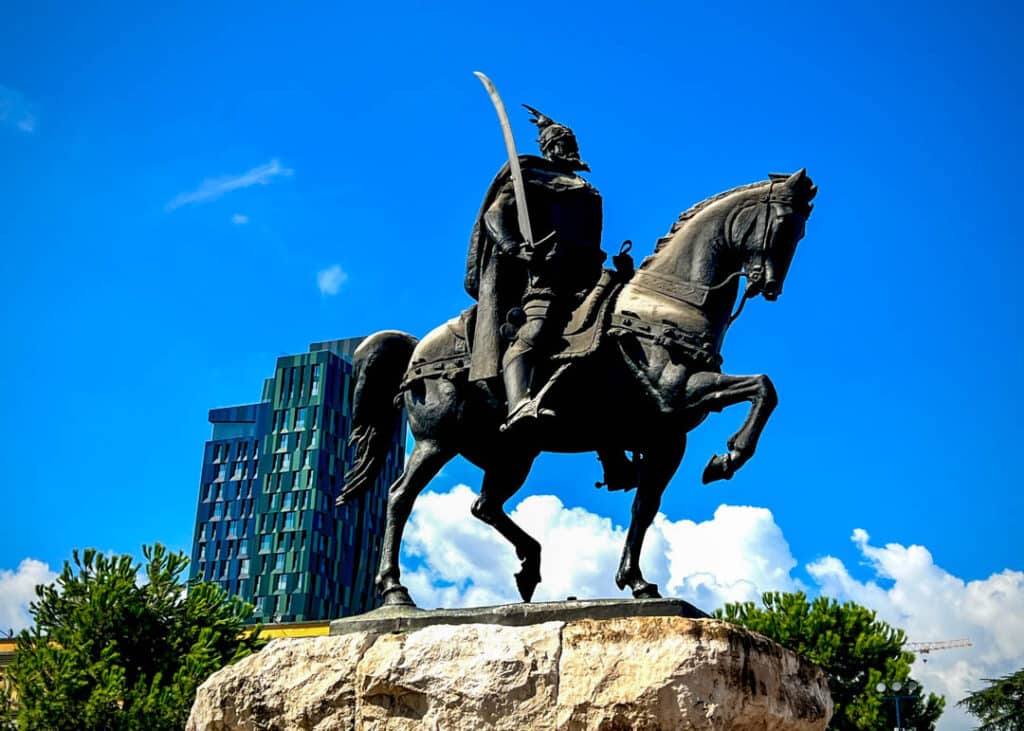
Turn around to see the true jewel of the square – Et’hem Bej Mosque.
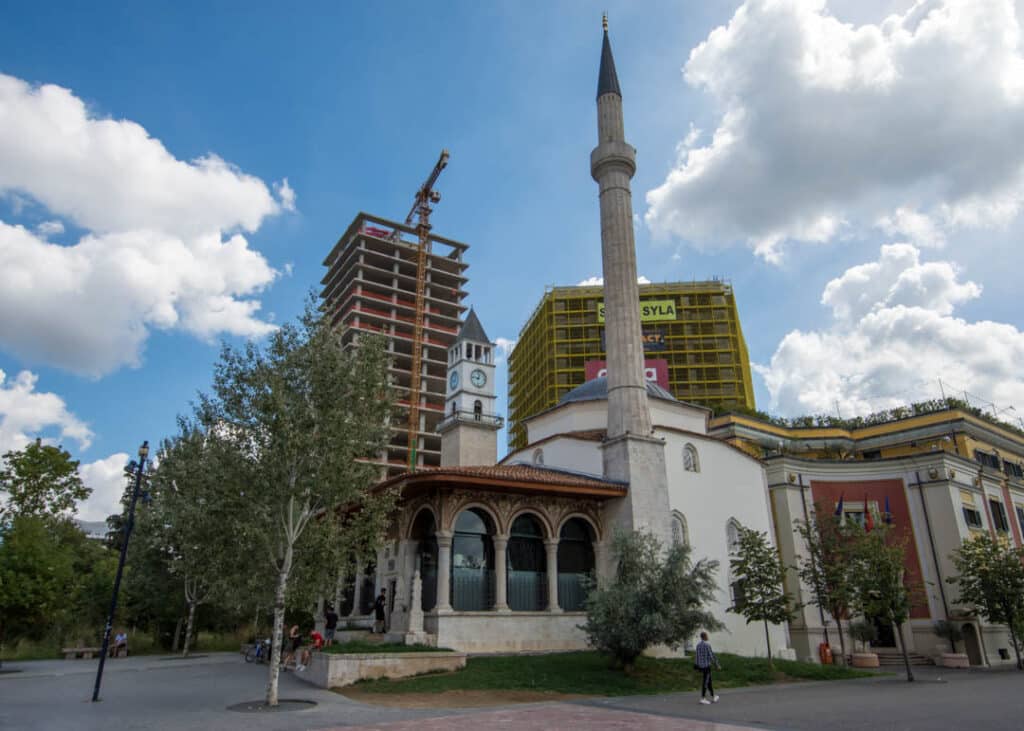
Don’t be fooled by its small size (even more so now that it’s being dwarfed by tall buildings being erected right behind!) – its interior is splendid and well worth a short visit to admire it from up close.
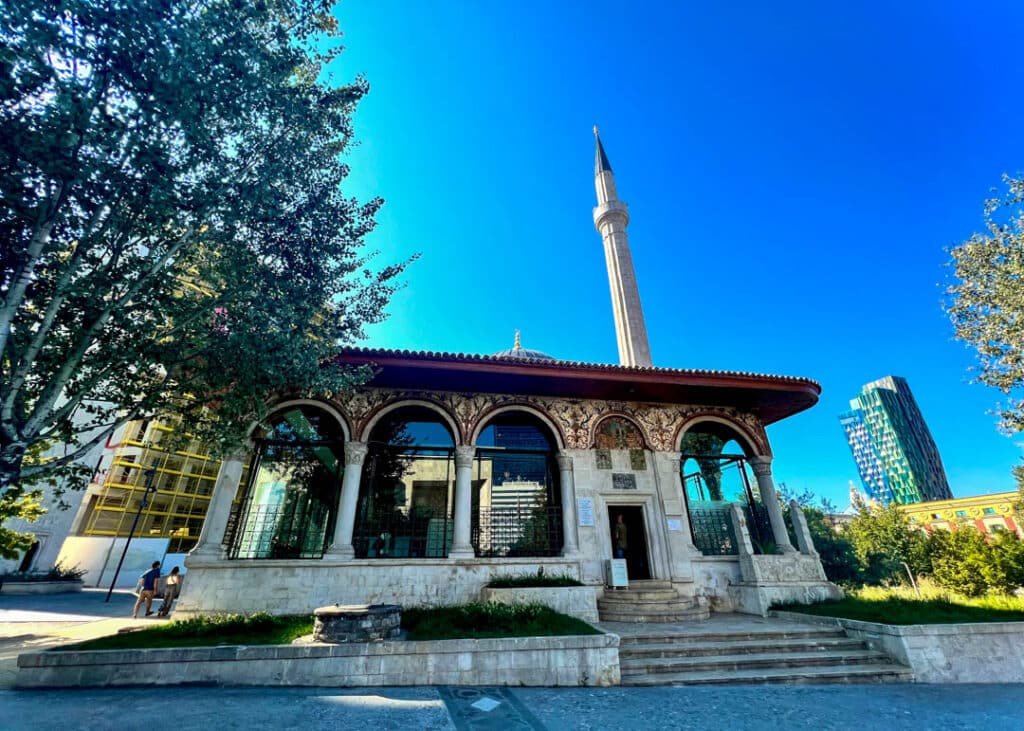
Famous especially for having survived the Communist regime which destroyed many of the country’s historic religious monuments, the 19th century mosque is one of the country’s best preserved.
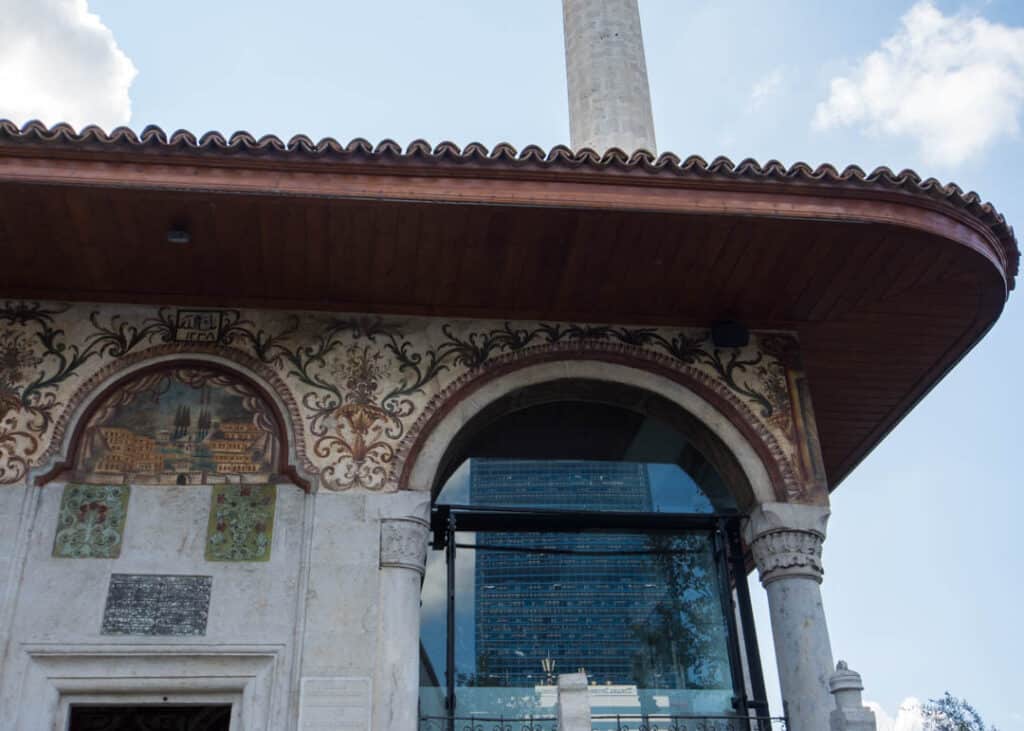
The daylight is best to take in the colorful frescoes and woodwork.
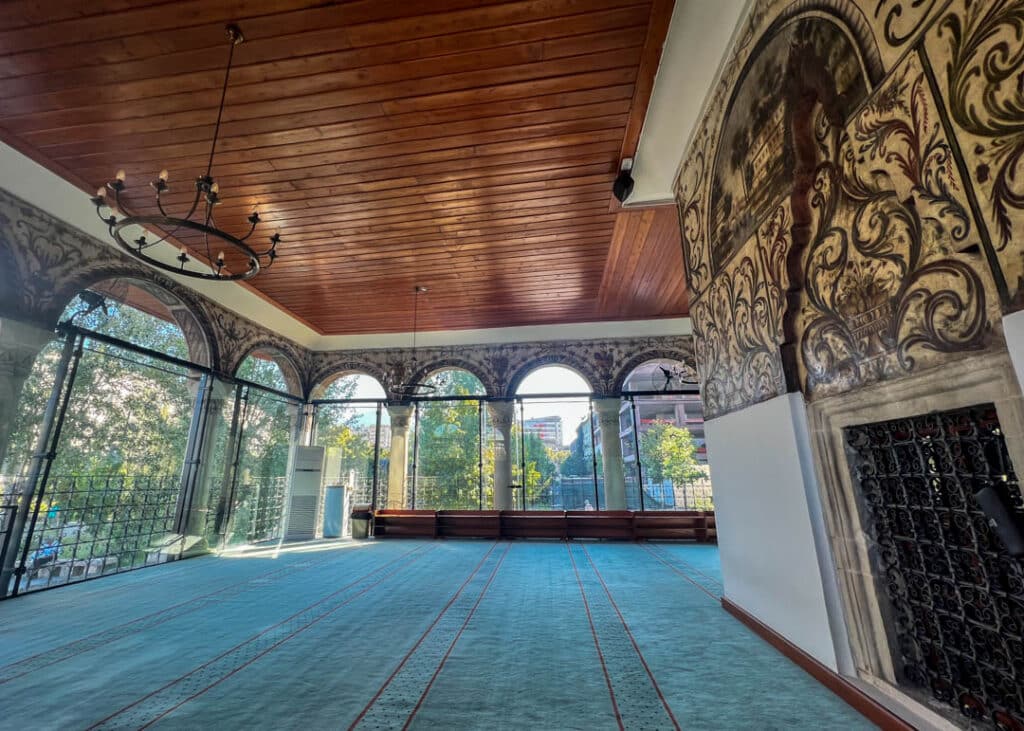
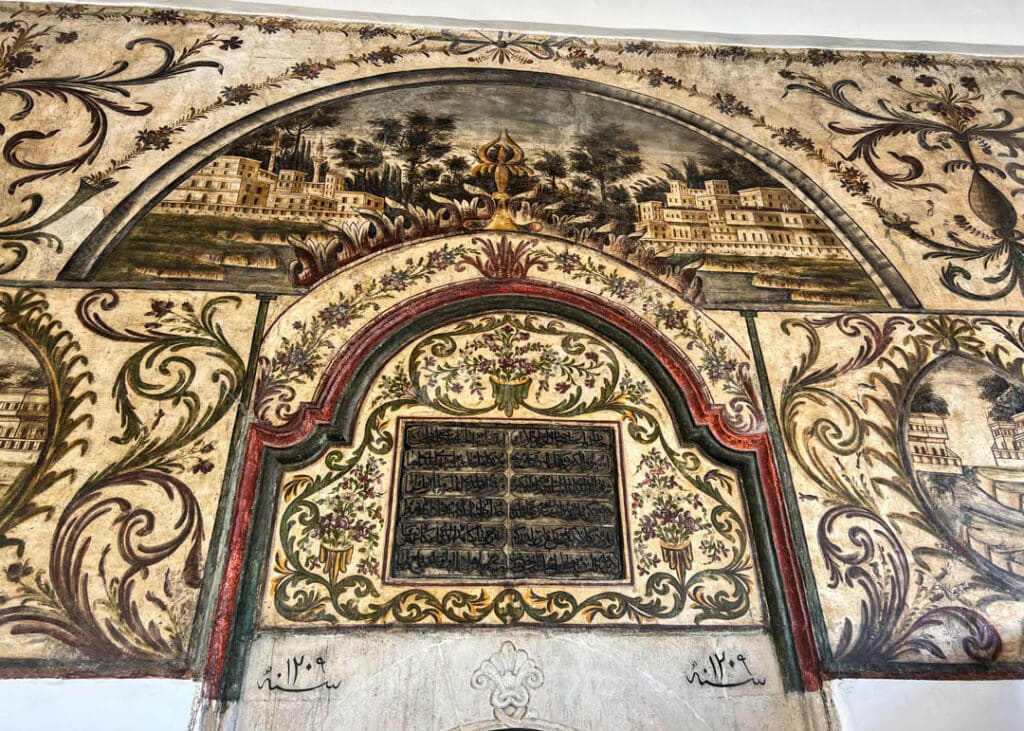
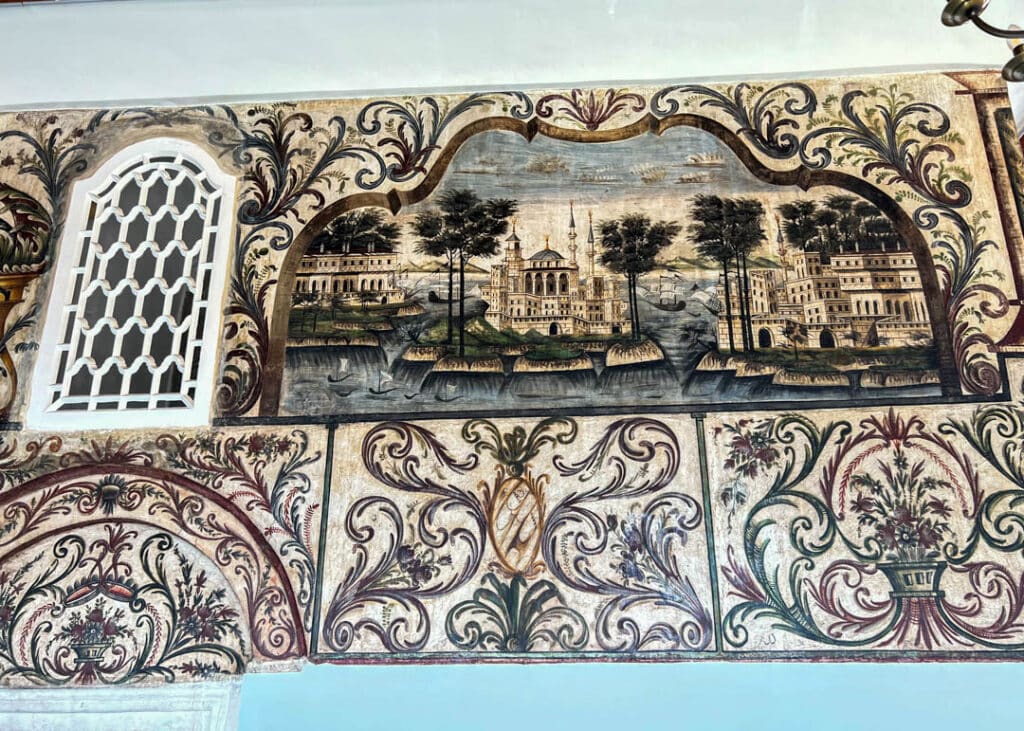
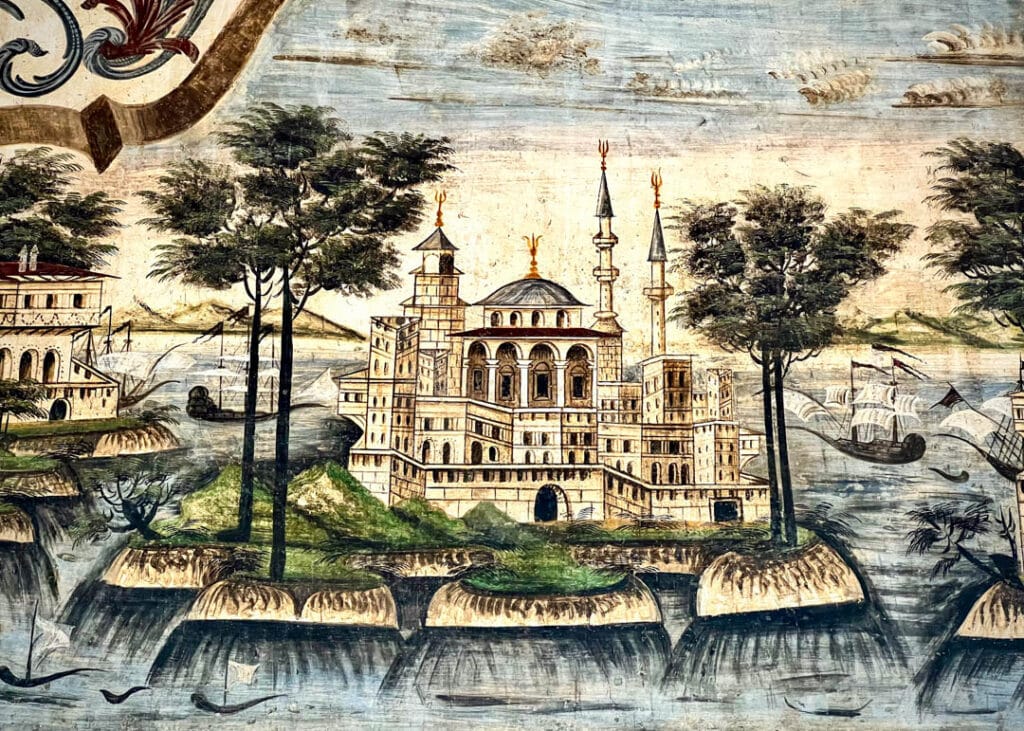
Step into the prayer hall for the full effect of being surrounded by intricate Ottoman frescoes under a giant dome…
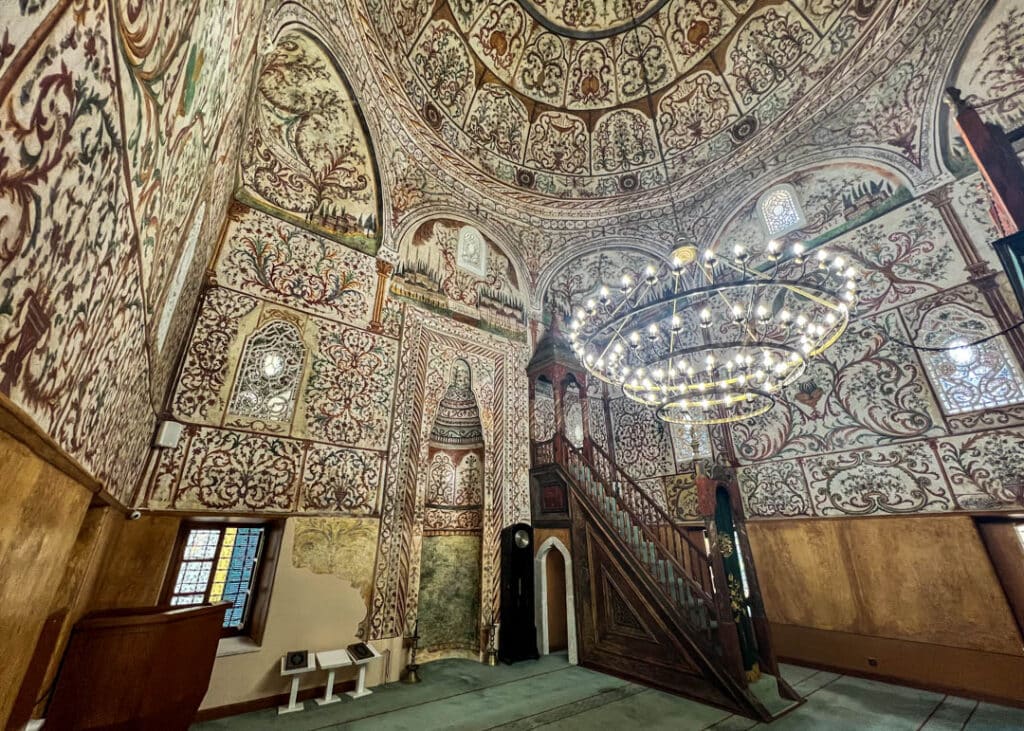
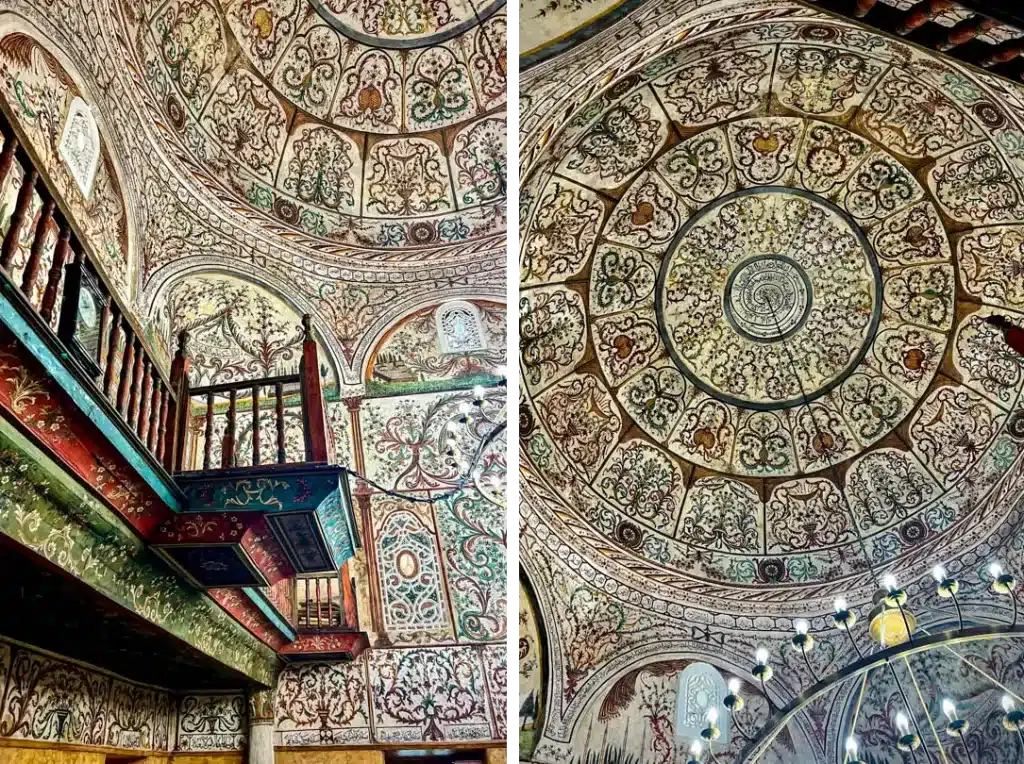
Behind the mosque, you’ll find The Clock Tower of Tirana, awkwardly fighting for space within the city center’s construction boom.
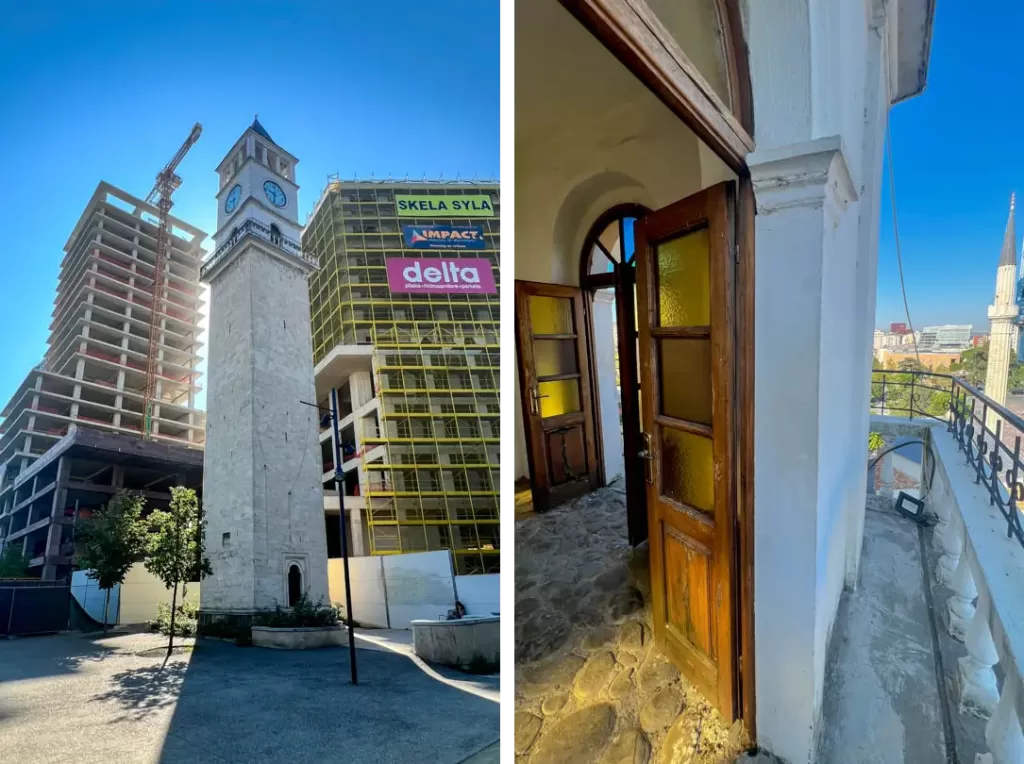
Climbing its steps leads to a pretty view of the square and the center.
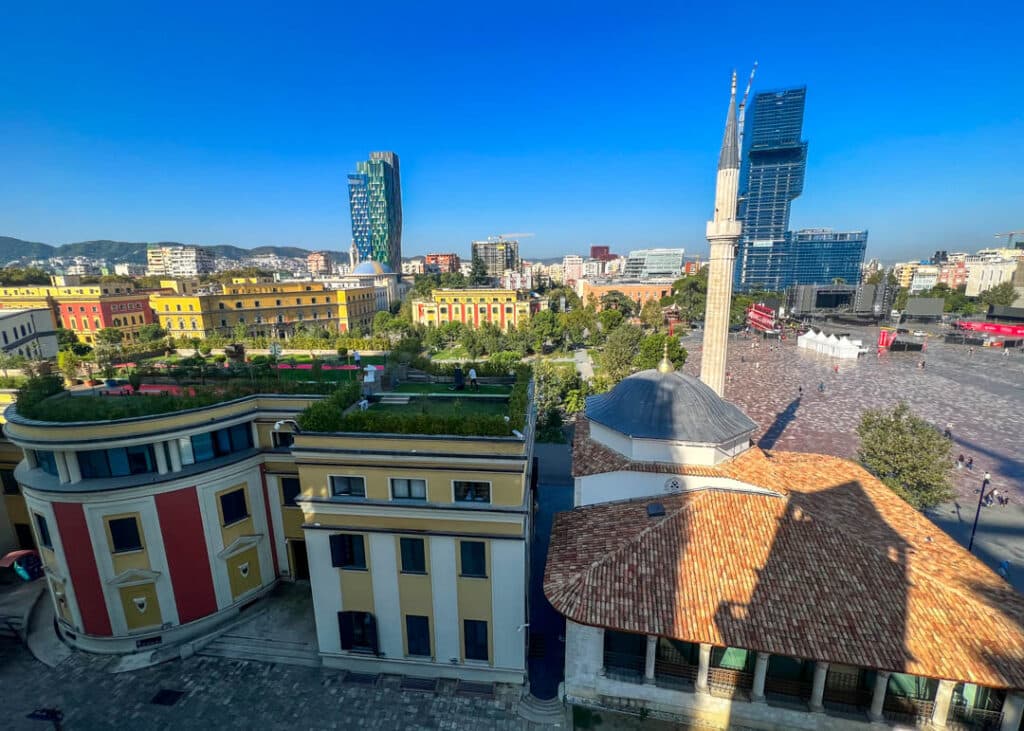
Get back down and wander around the colorful ministry buildings which would cure anyone suffering from architecture boredom.
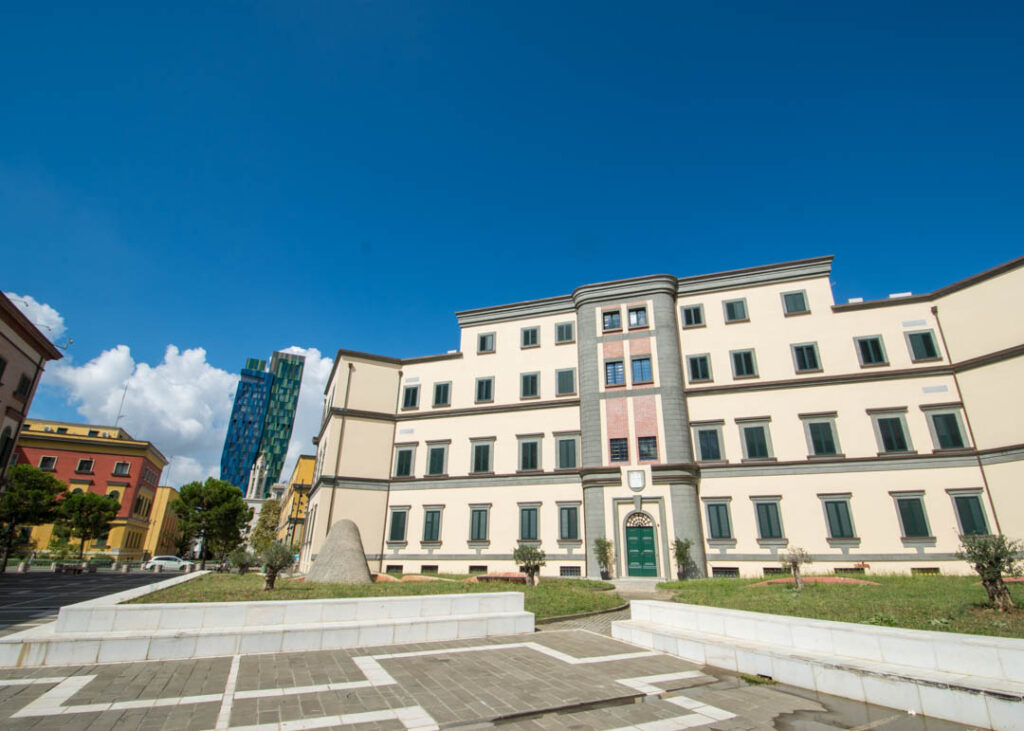
That green and blue tower that keeps catching your eyes everywhere you look is the Forever Green Tower build as part of Tirana’s reconstruction. At 85m high it is now one of the tallest buildings in the Balkans and is sure is a treat to see.
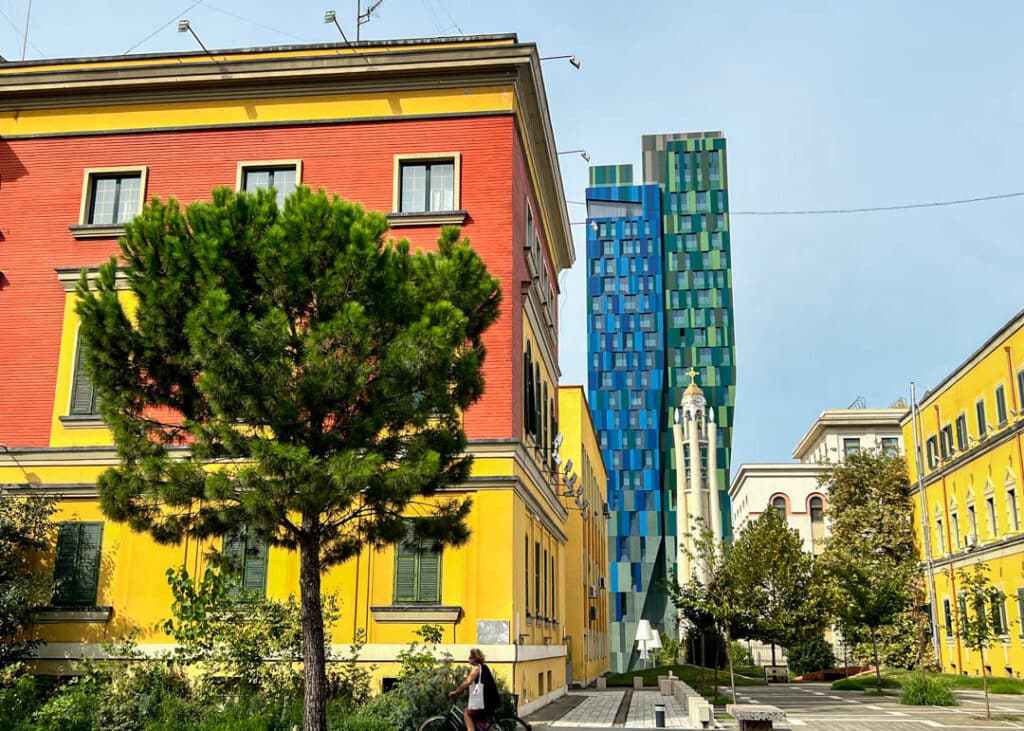
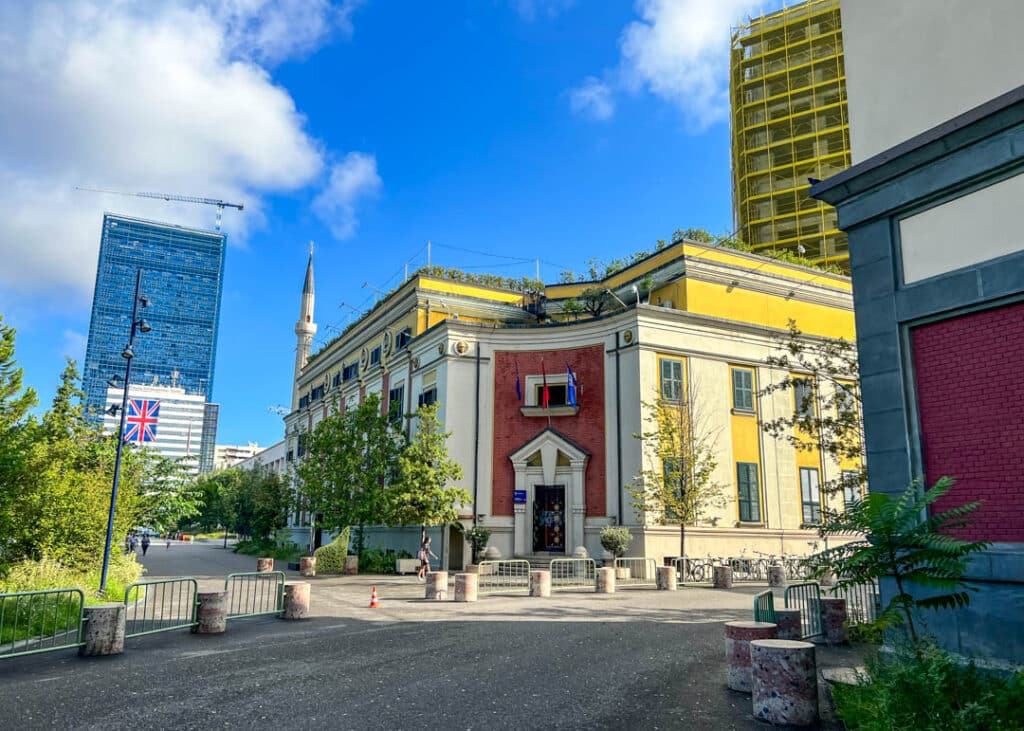
Lower to the ground with a much more significant history, notice the two adjoining concrete entrance and exit of Bunk’Art 2, an underground shelter turned museum and art space. Nothing in the vicinity reflects better Tirana’s initiative to use culture to memorialize the past while celebrating the beginning of a new era. This nuclear shelter was secretly built underneath the Ministry of Internal Affairs in the early ’80s by former dictator Enver Hoxha who suffered from paranoia and was convinced a nuclear war was inevitable.
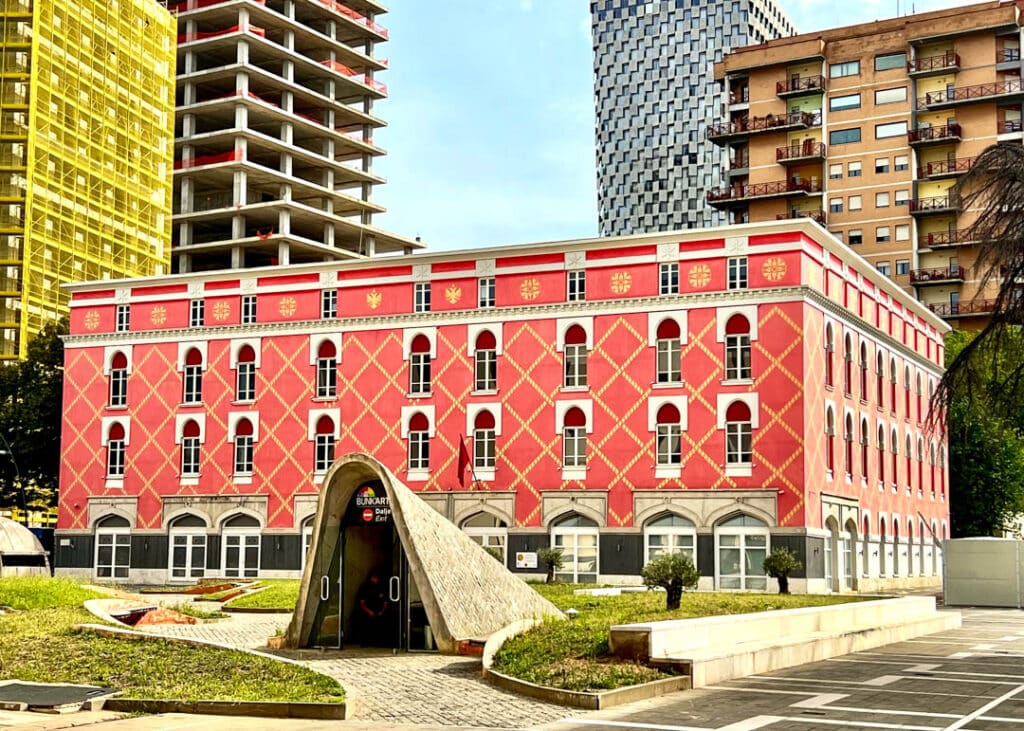
During his rule which lasted over 50 years, he built hundreds of thousands of bunkers all over Albania, enslaving and bringing an entire population to the brink of starvation. And of course history has proven that there was no such nuclear threat. Some of these bunkers are finding a second life today with great success. Make sure to visit the first Bunk’Art 1 and read about it in my other post – it’s just outside the city center, much bigger, and in my opinion much more interesting than #2).
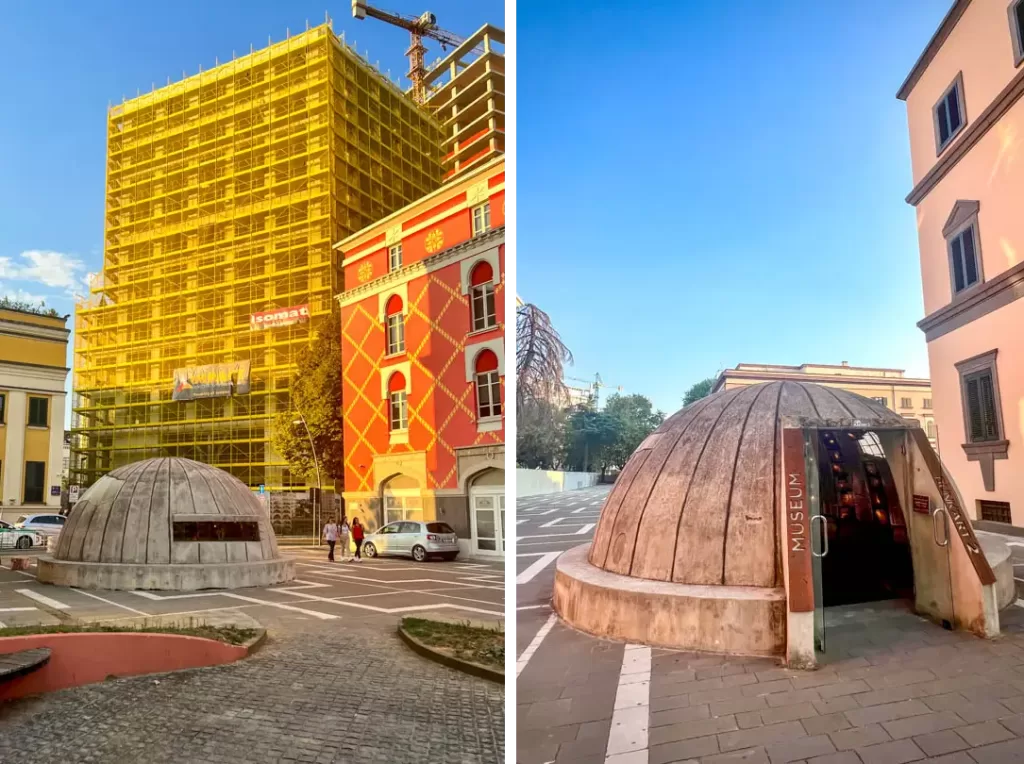
Bunk’Art 2 remained hidden to the population until 2015 and turned into what it is today after the massive success of Bunk’Art 1 in the outskirts of Tirana. The exhibit focuses on the communist period and through 24 rooms (some rather unpleasant!) you learn about the political persecutions of 100,000 Albanians from 1945-1991, the creation of the state security police, and the atrocities that took place during this very dark period. Vintage photos of Albanians murdered by the Communist government line the domed entry while recordings of their relatives’ remembrances play on speakers.
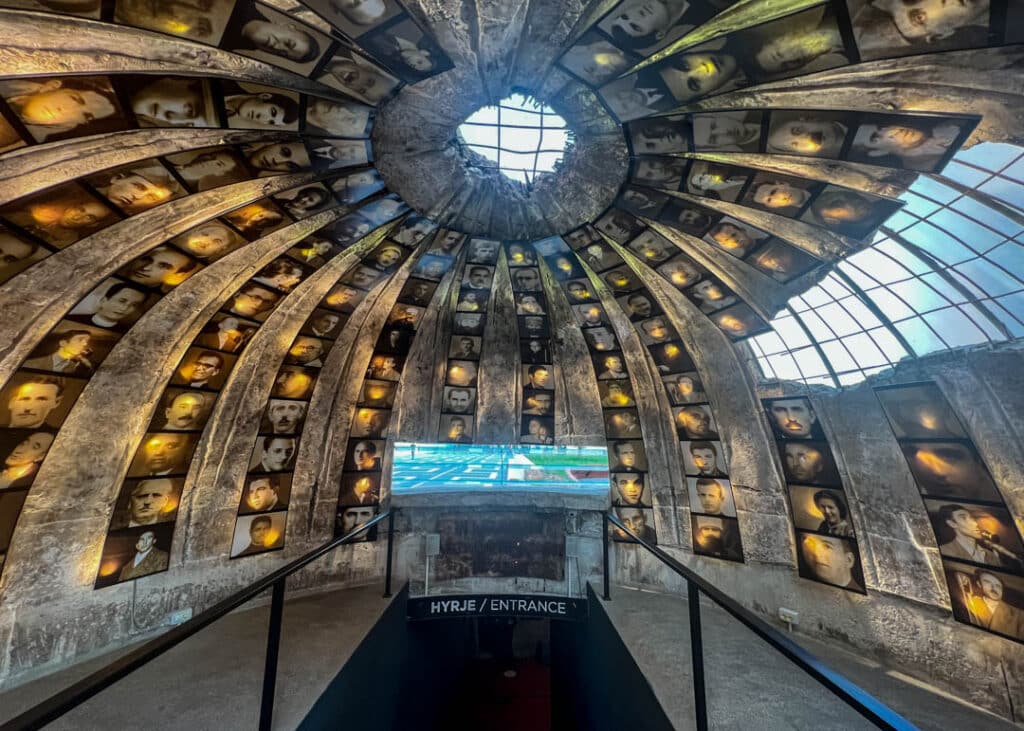
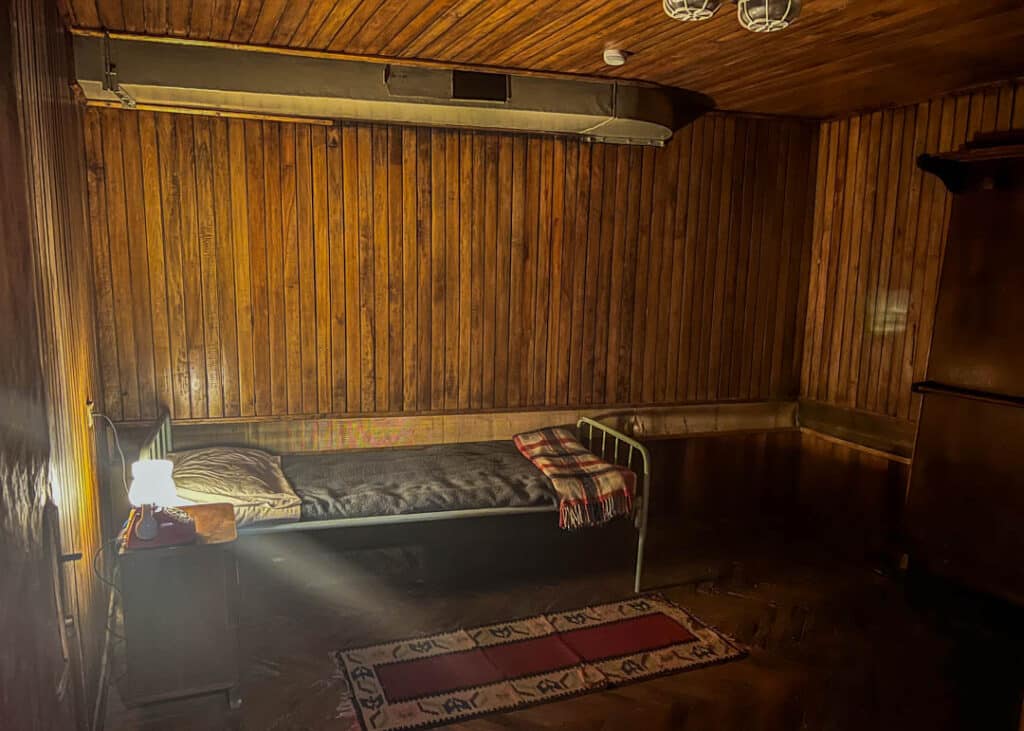
Reemerge in the daylight to continue the architecture exploration in the fresh air. Close by, another marvel is the site of the Tomb of Kapllan Pasha who was the administrator of Tirana during the Ottoman period. As it’s a monument of cultural heritage, the city cleverly built the adjoining Plaza Hotel literally around it…
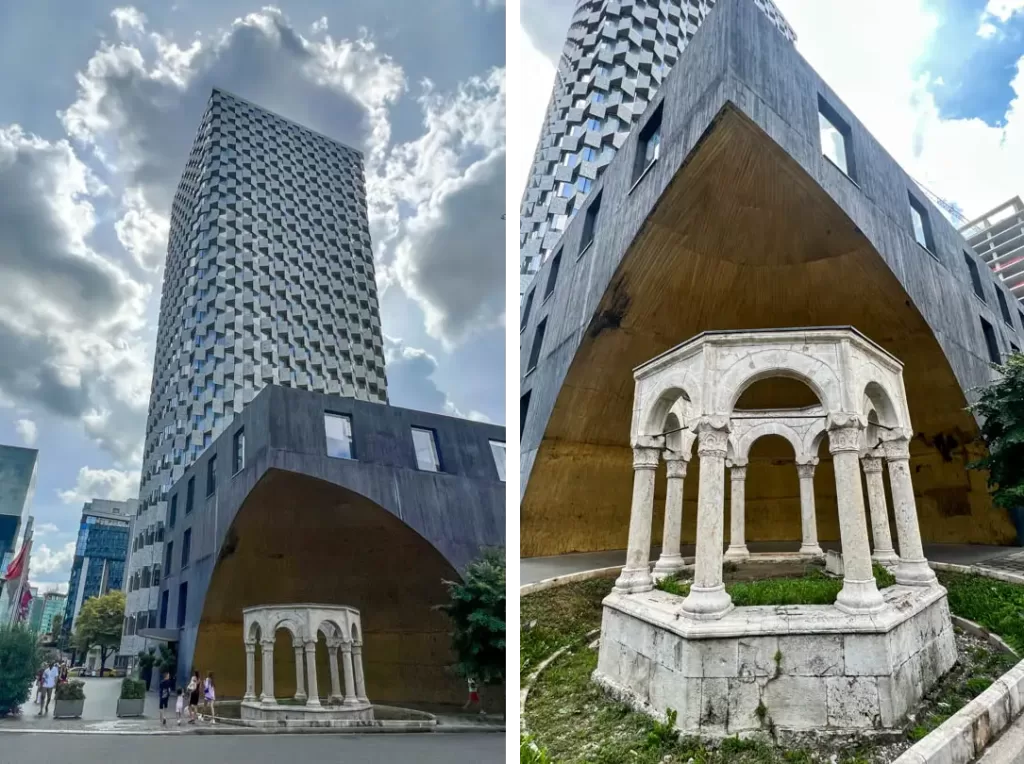
The huge orthodox church (Resurrection Cathedral) was completed in 2012 and has become quite an attraction with its gorgeous and flashy design.
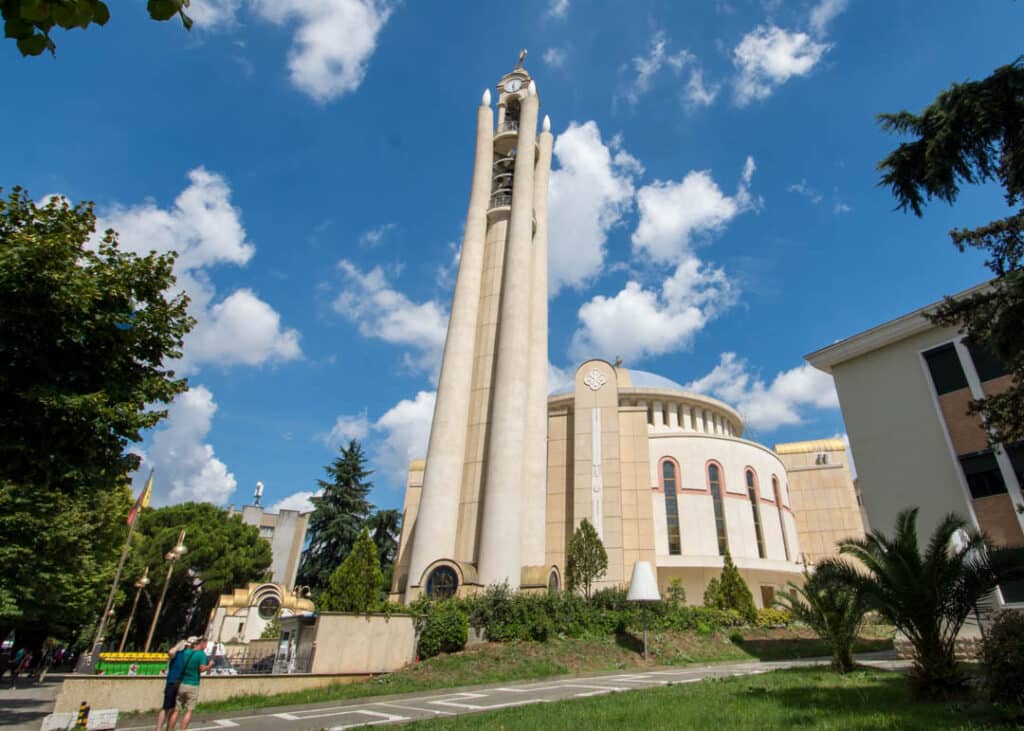
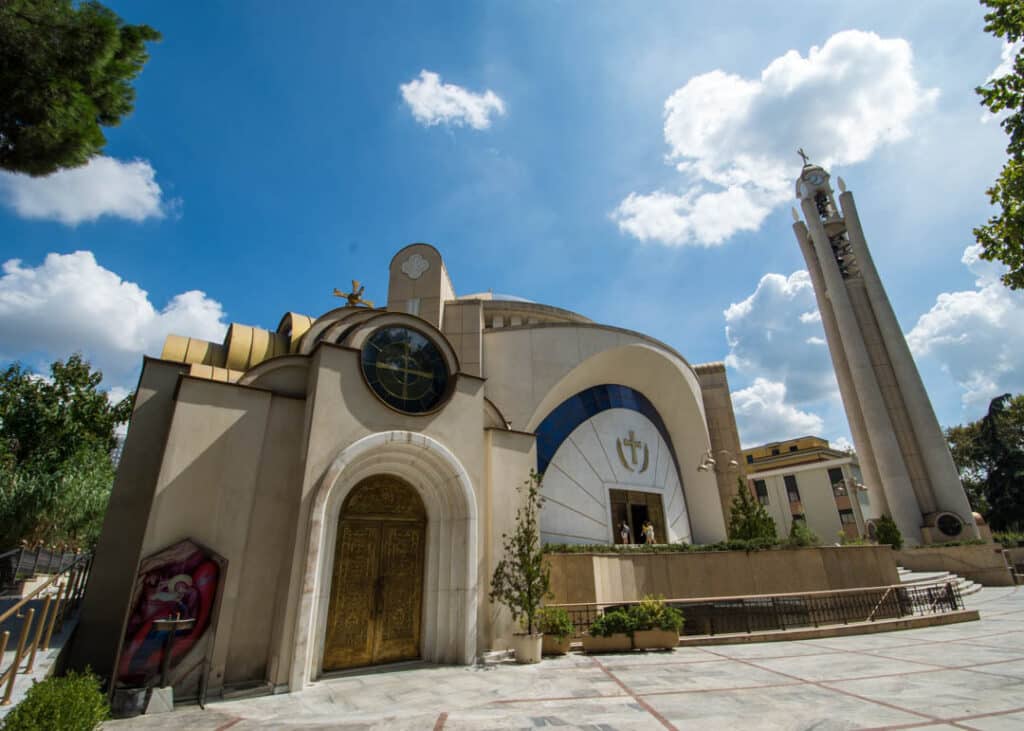
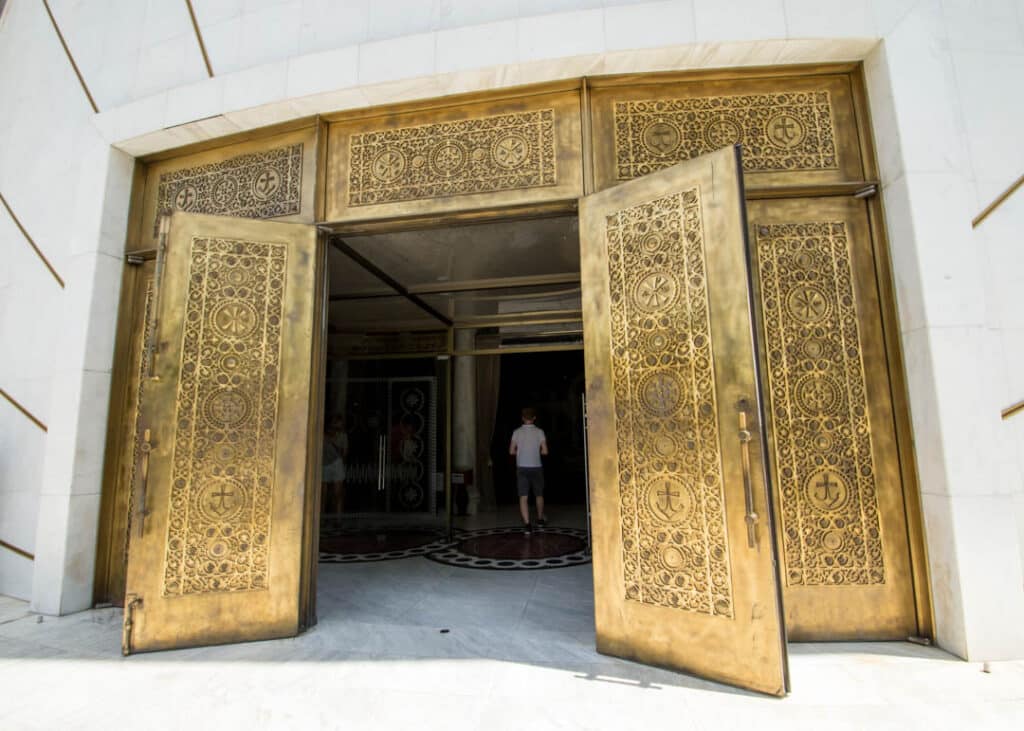
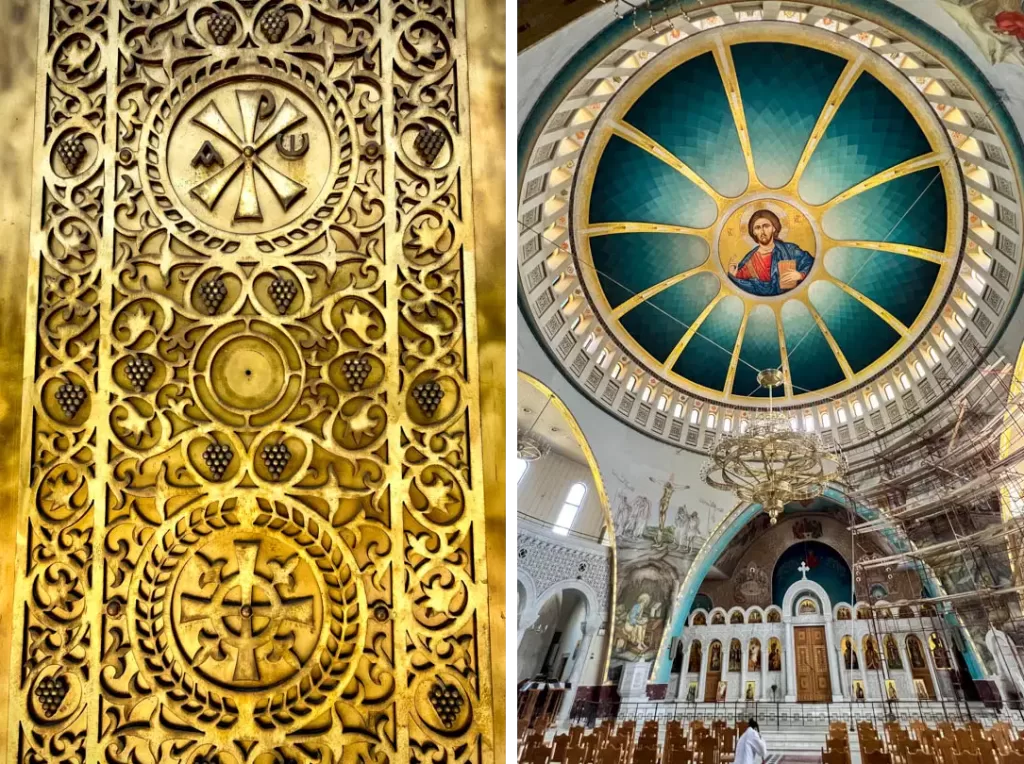
Down the street, admire the art installation “Reja (The Cloud)” made by a famous Japanese architect in front of the National Gallery of Arts. You can go inside, sit on it, and chill in the open air.
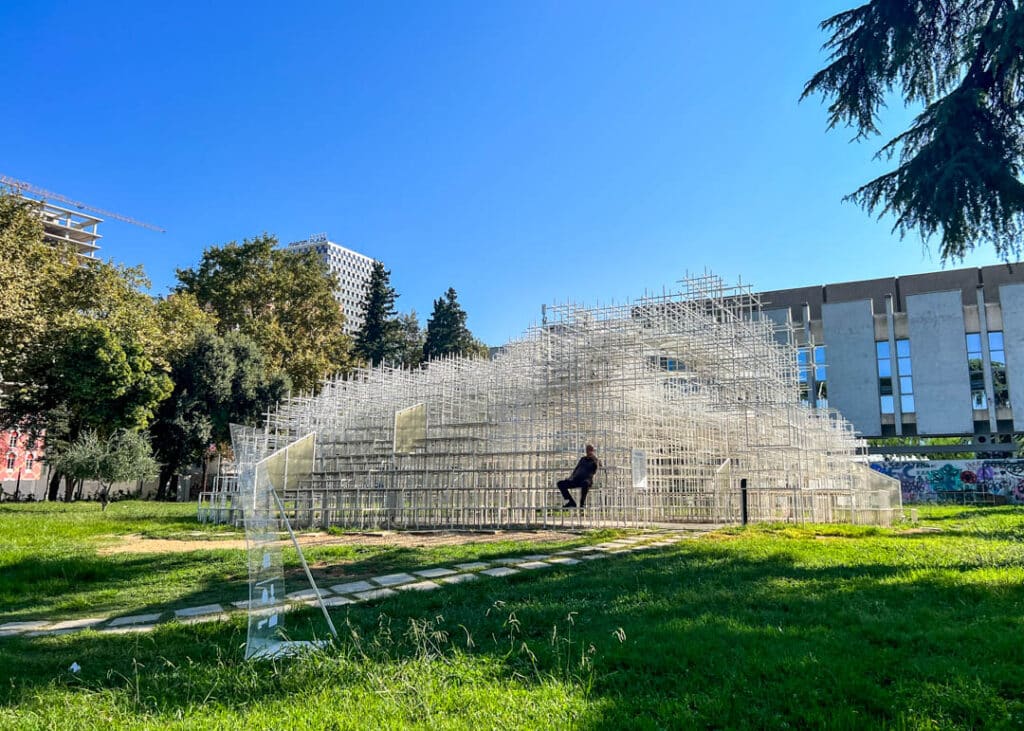
From there, take Tirana’s pedestrian street Murat Toptani, named after the leading Albanian noble family under Ottoman rule. The stone-paved street is a wonderful shady respite with restaurants, cafes, and shops.
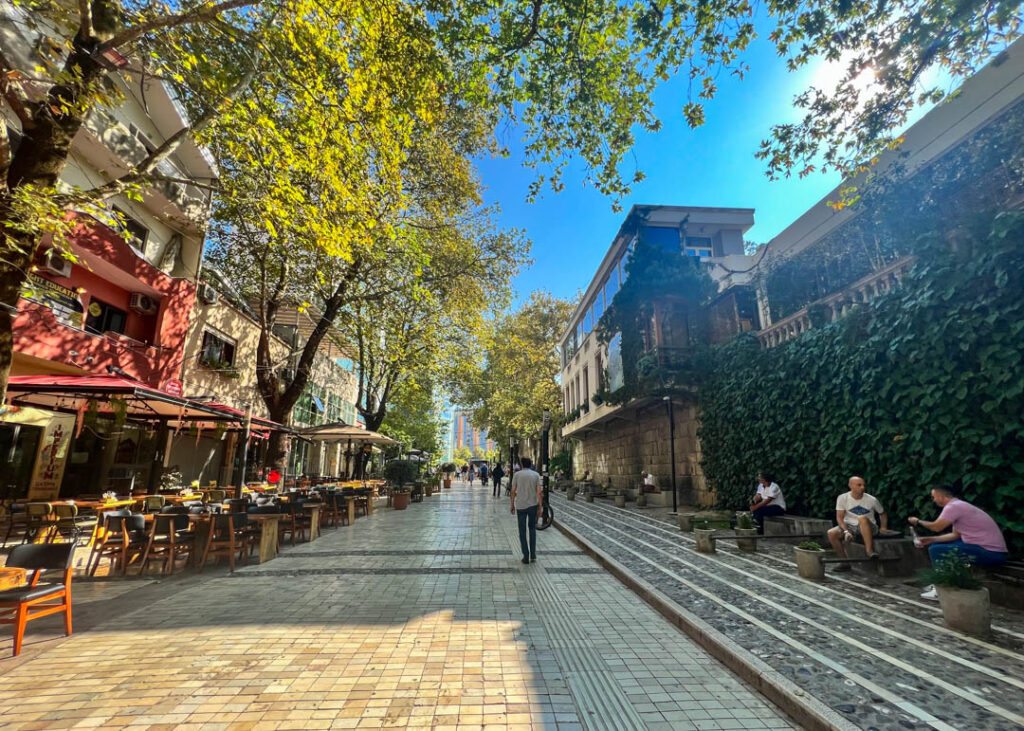
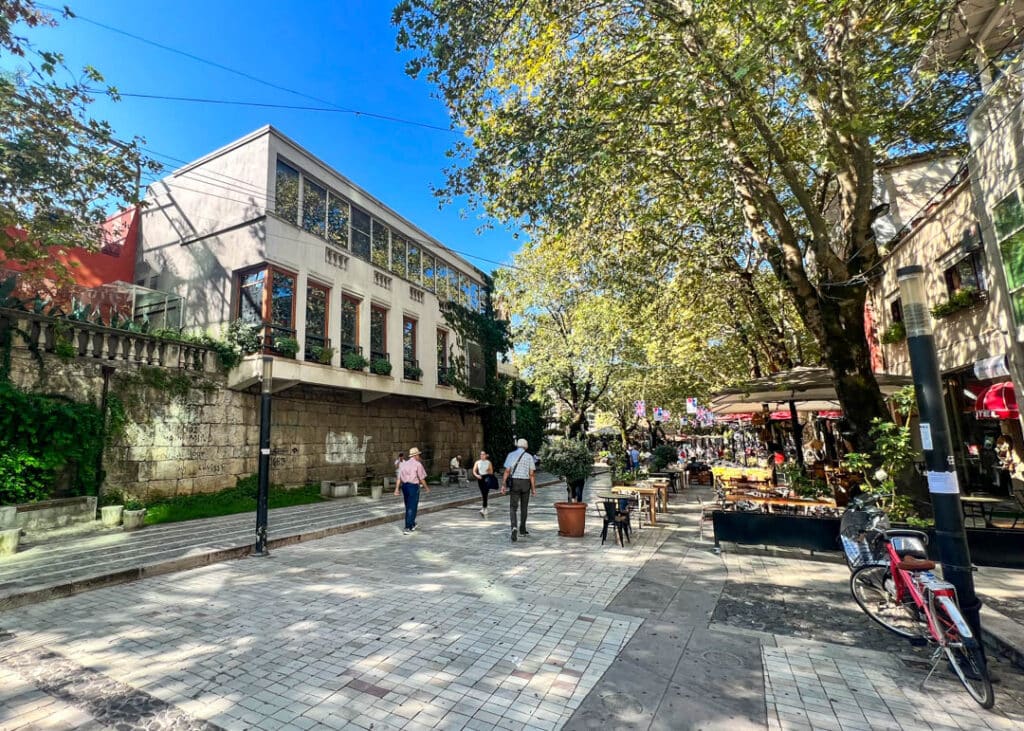
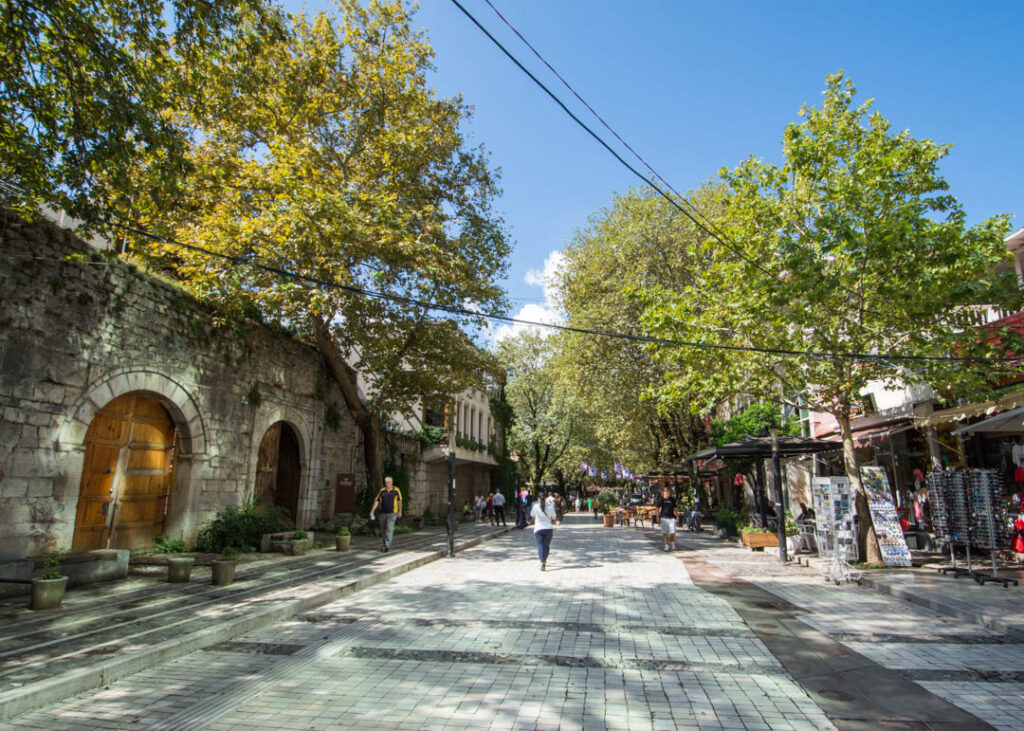
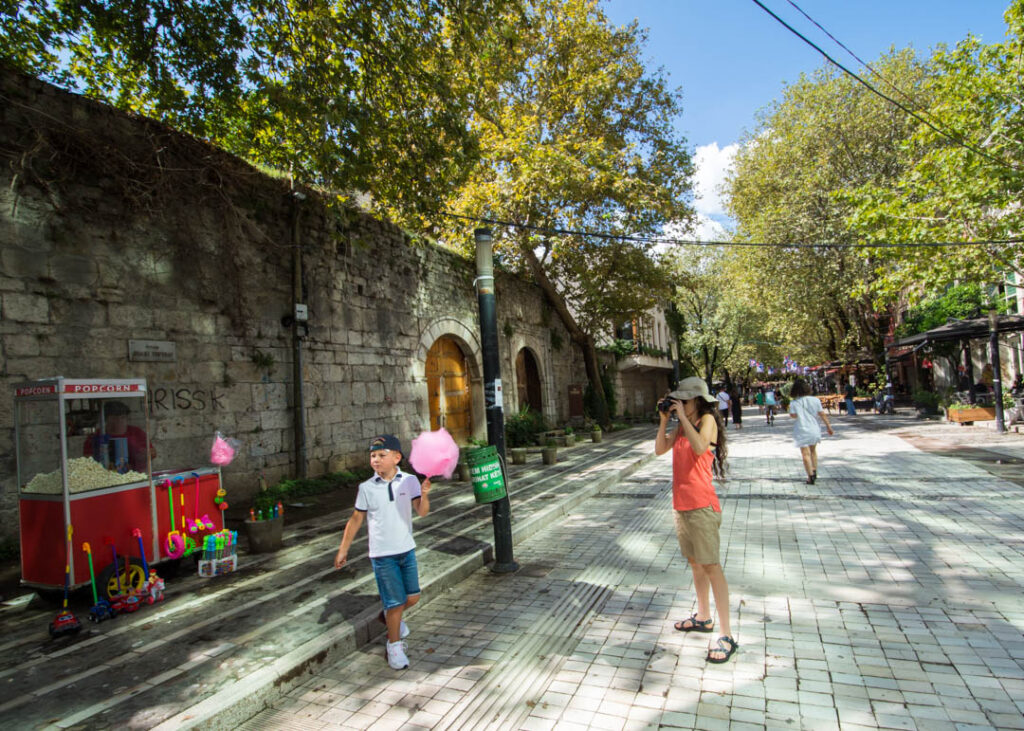
As with everywhere in the city, modern mixes with history here too and that stone wall you’ve been following for a bit finally leads to an opening… welcome to Tirana Castle. The fortress dates back to before 1300 and stands where the heart of Tirana was back then.
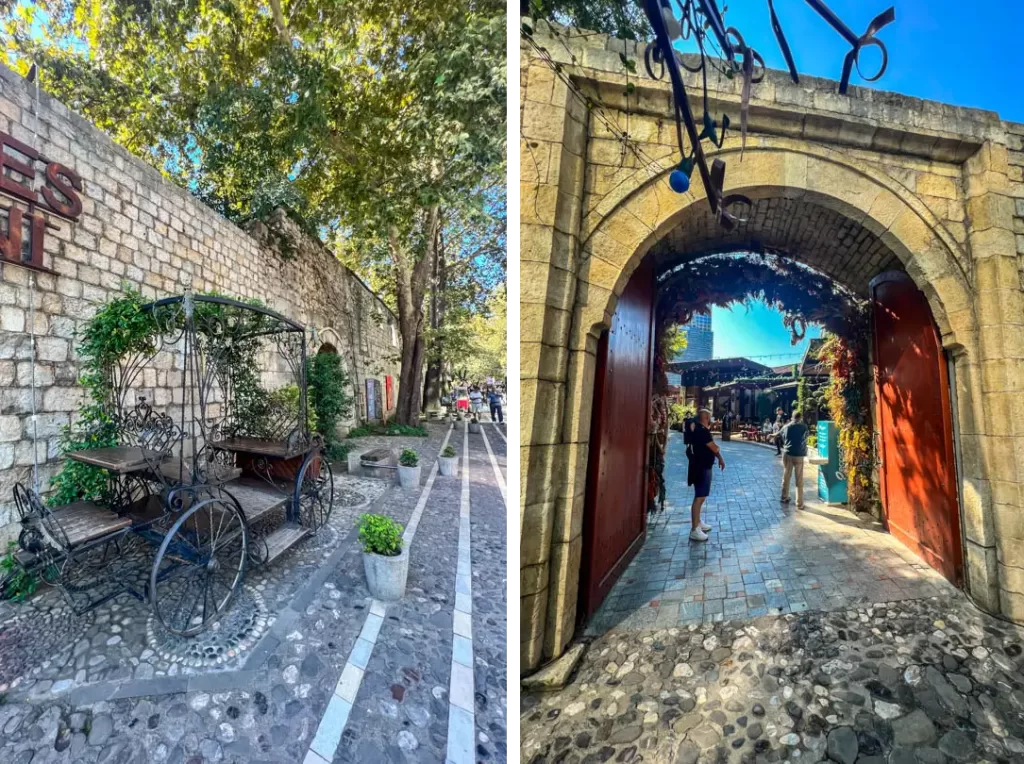
Today you can go through the gate and stroll through the Old Bazaar lined with shops and restaurants focusing on traditions, culture, and art.
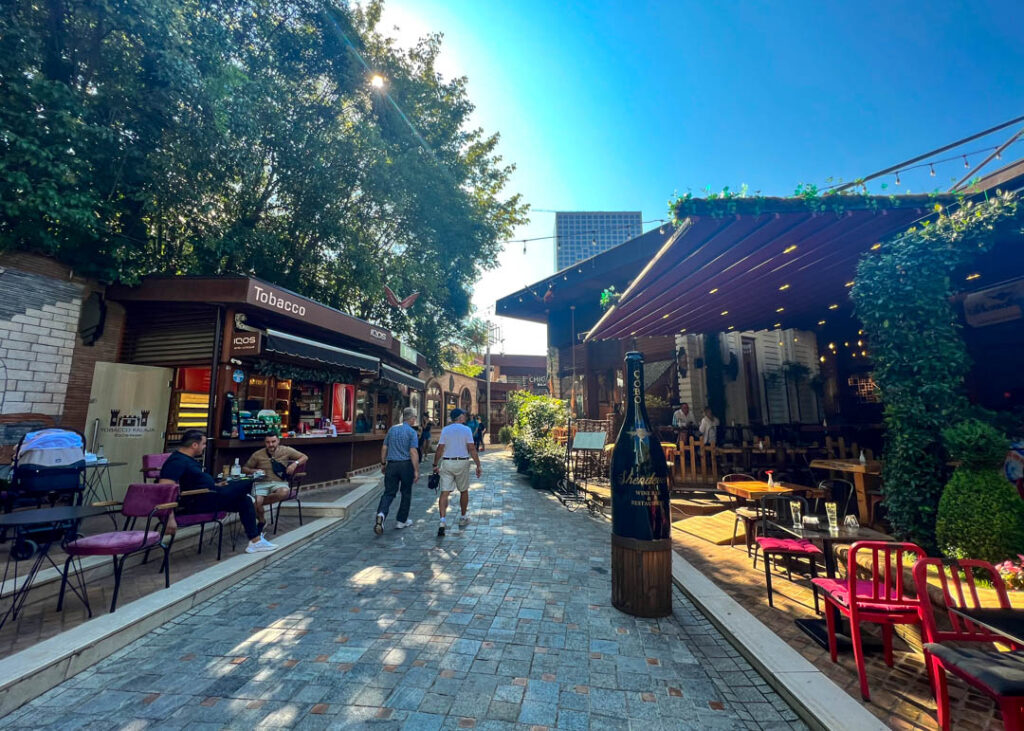
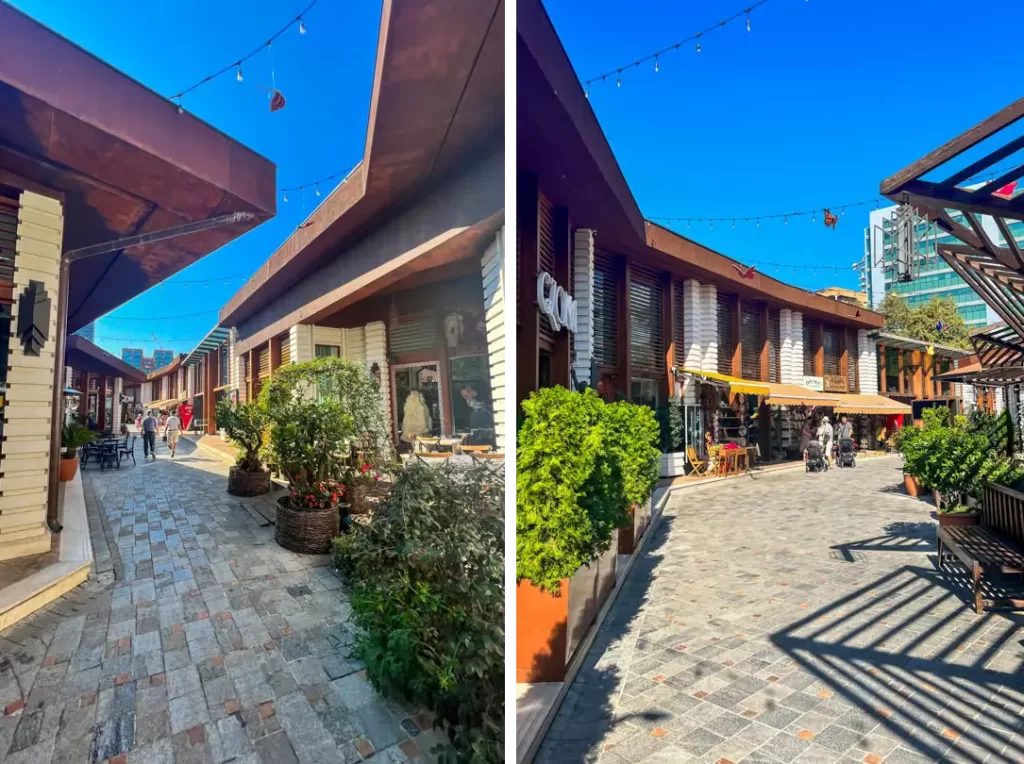
At the end you’ll spill out right onto Zhan D’Ark Boulevard (named after Joan of Arc) and right next to the modern looking Catholic Cathedral of St Paul.
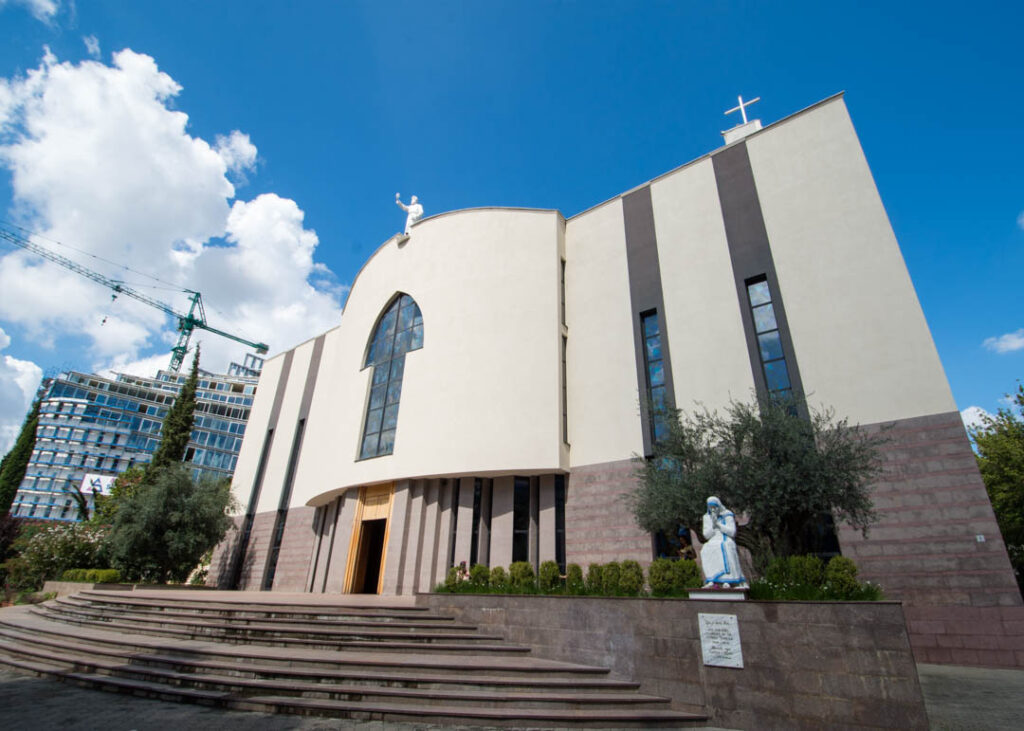
You’ll be greeted by a statue of Mother Teresa at the entrance and a mosaic of her inside besides some beautiful stained glass windows.
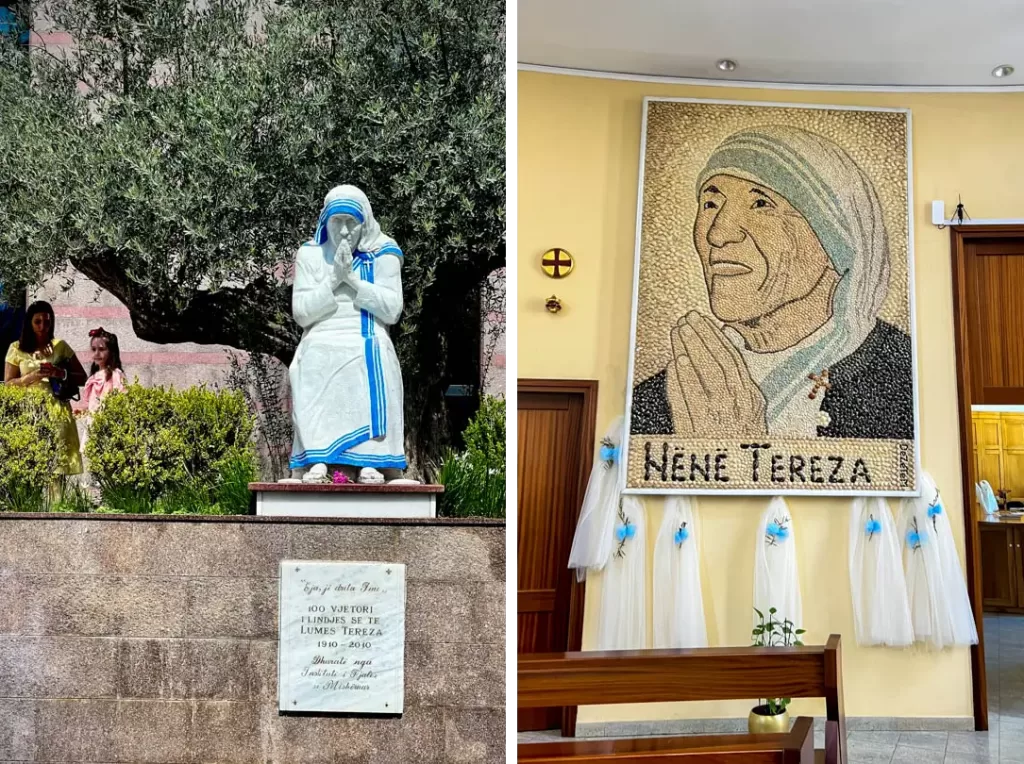
Rounding up the most interesting religious monuments in the center, Namazgah Mosque (also called The Great Mosque of Tirana) was nearing completion when I visited and will be the largest mosque in the Balkans, able to fit 4500 worshippers.
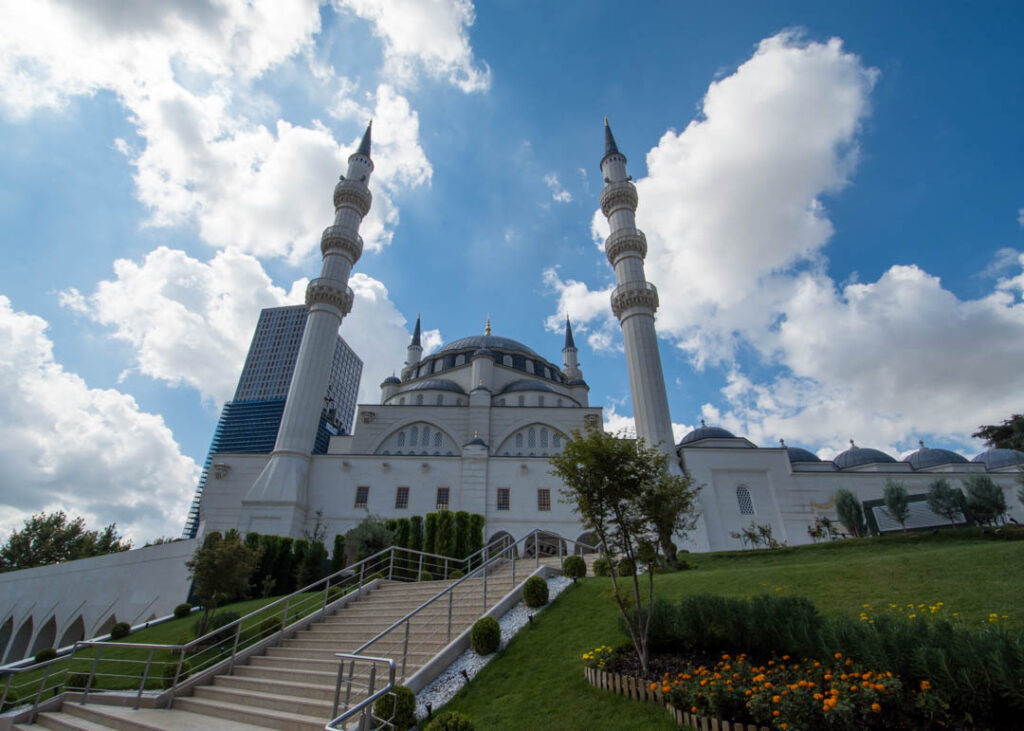
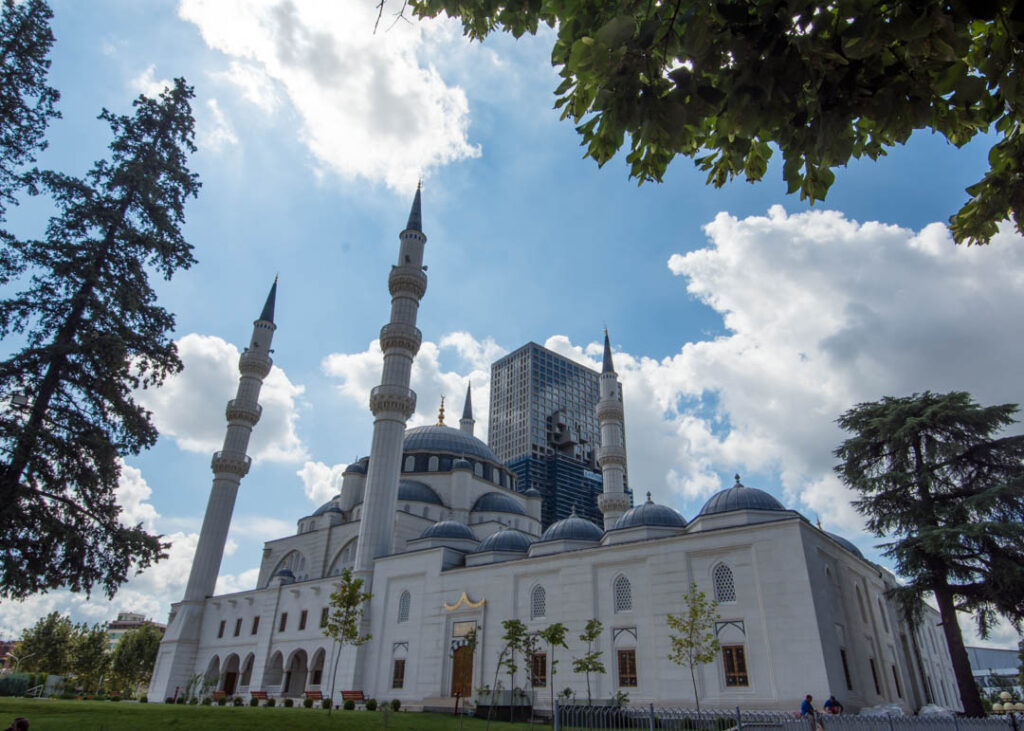
Across the street, walk over the restored Tanner’s Bridge, an 18th century stone footbridge that was once the road used by livestock and produce to enter the city from the eastern highlands.
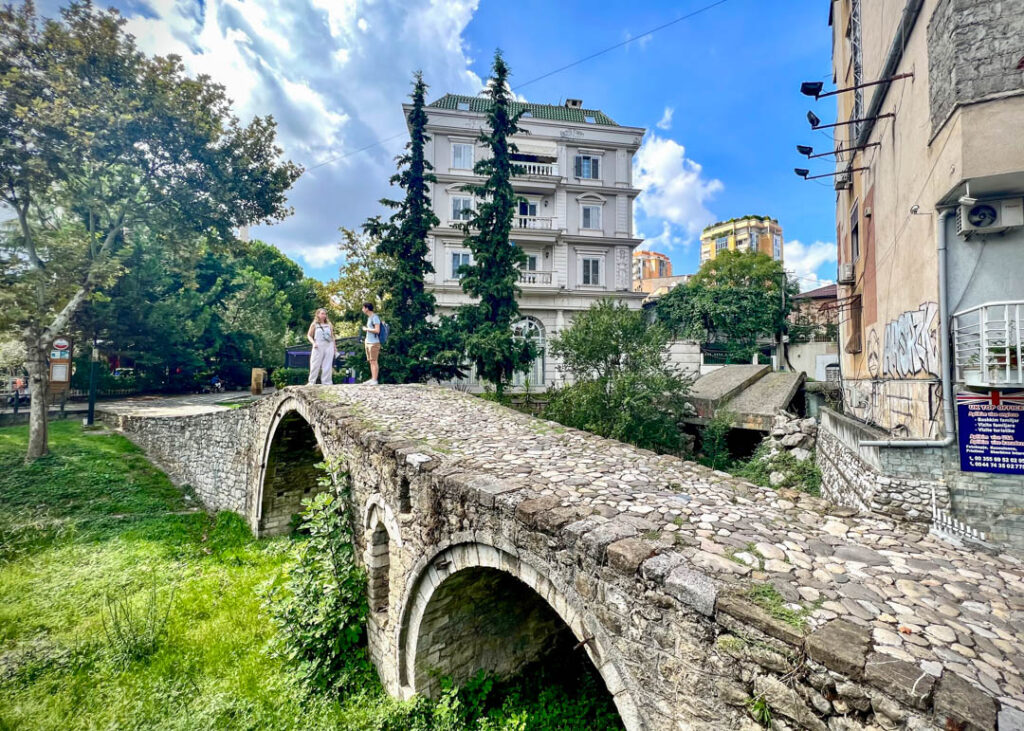
When hunger strikes, right behind the bridge you’ll find a delightful traditional restaurant – Mrizi i Zanave Tirane.
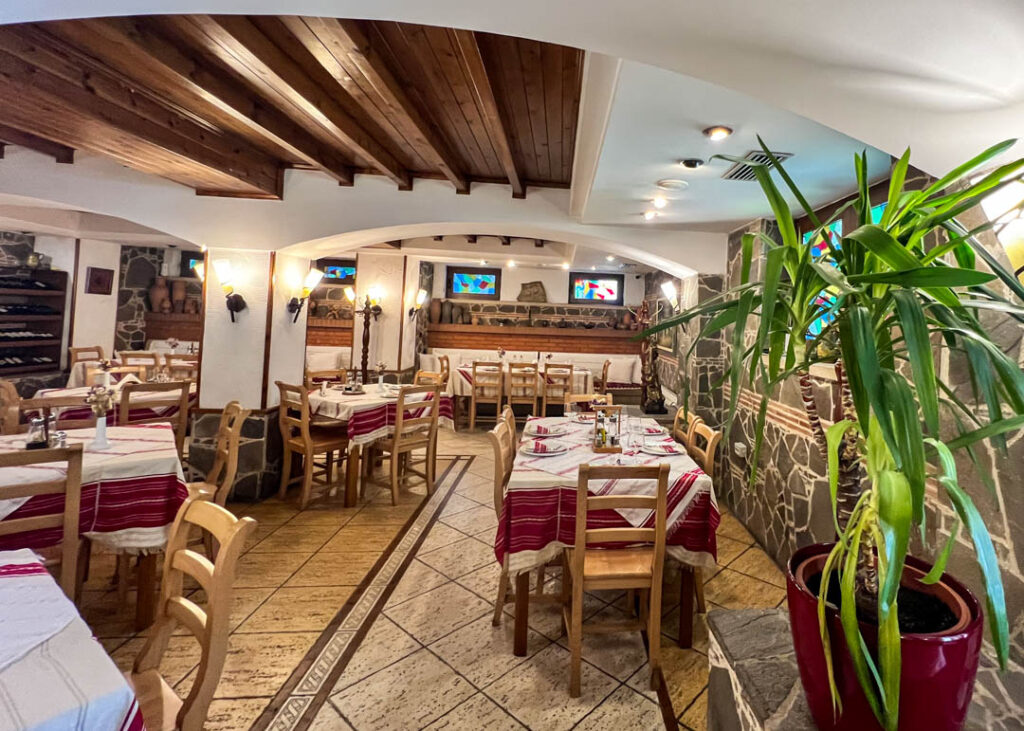
Enjoy farm to table cuisine in relative quietness during the week (the weekends turn into huge family gatherings with live music!) with ingredients coming straight from the mountains in the north where they also run an agritourism hotel/restaurant.
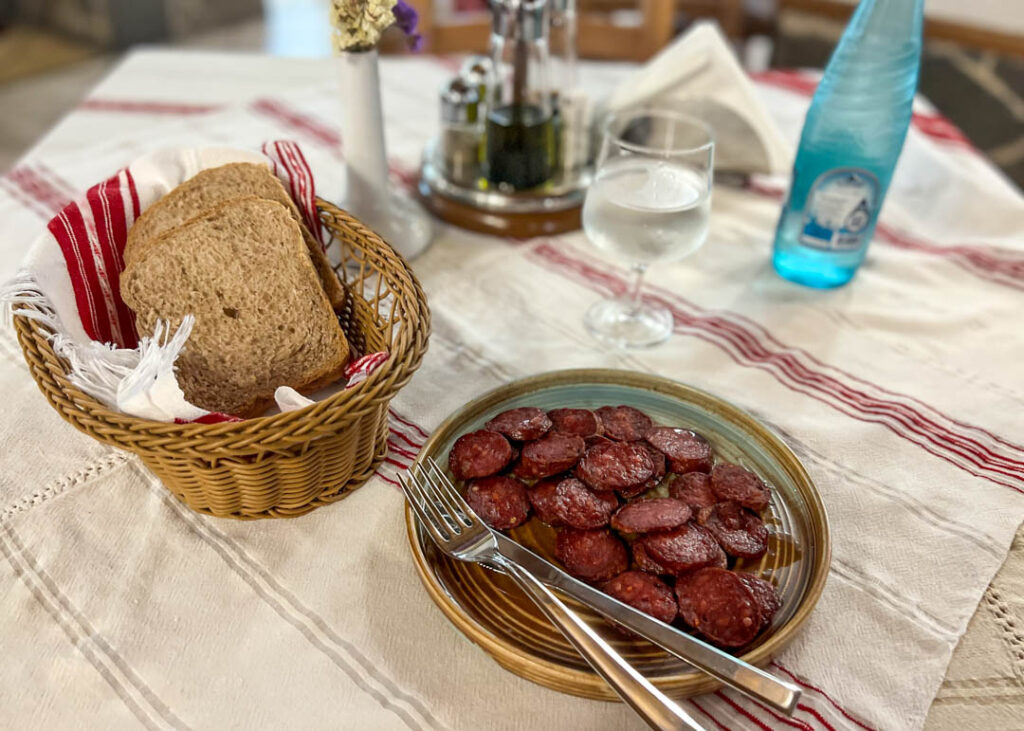
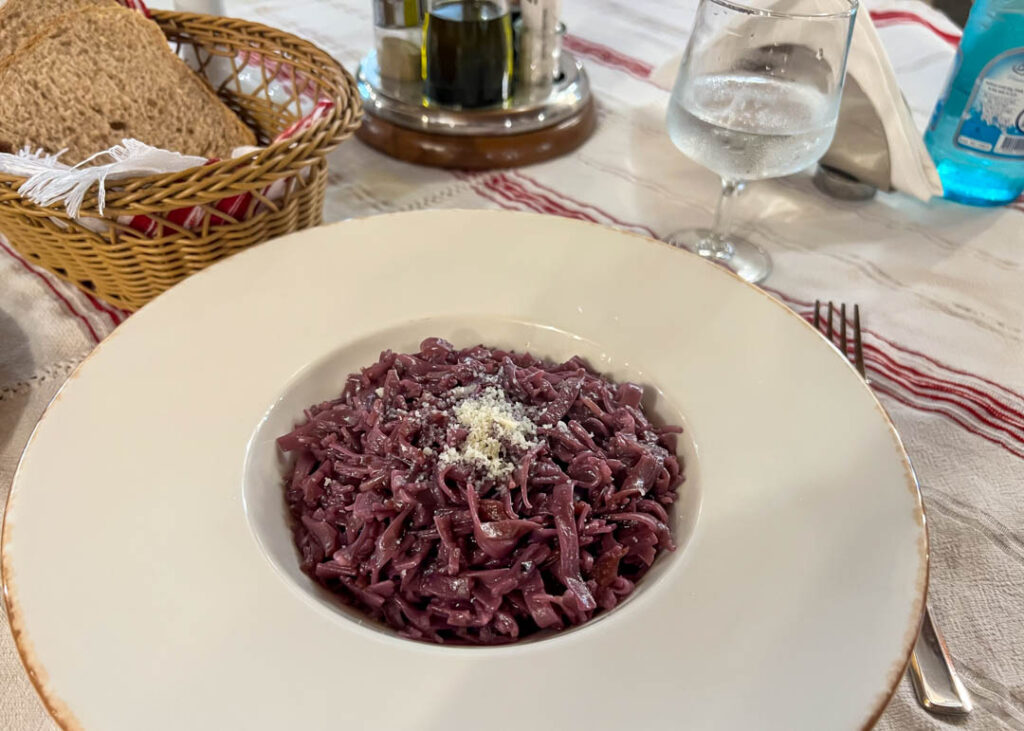
A few blocks north you can see some of the ingredients in The New Bazaar, one of the oldest residential neighborhoods in Tirana with a small and beautiful farmer’s market in its central square.
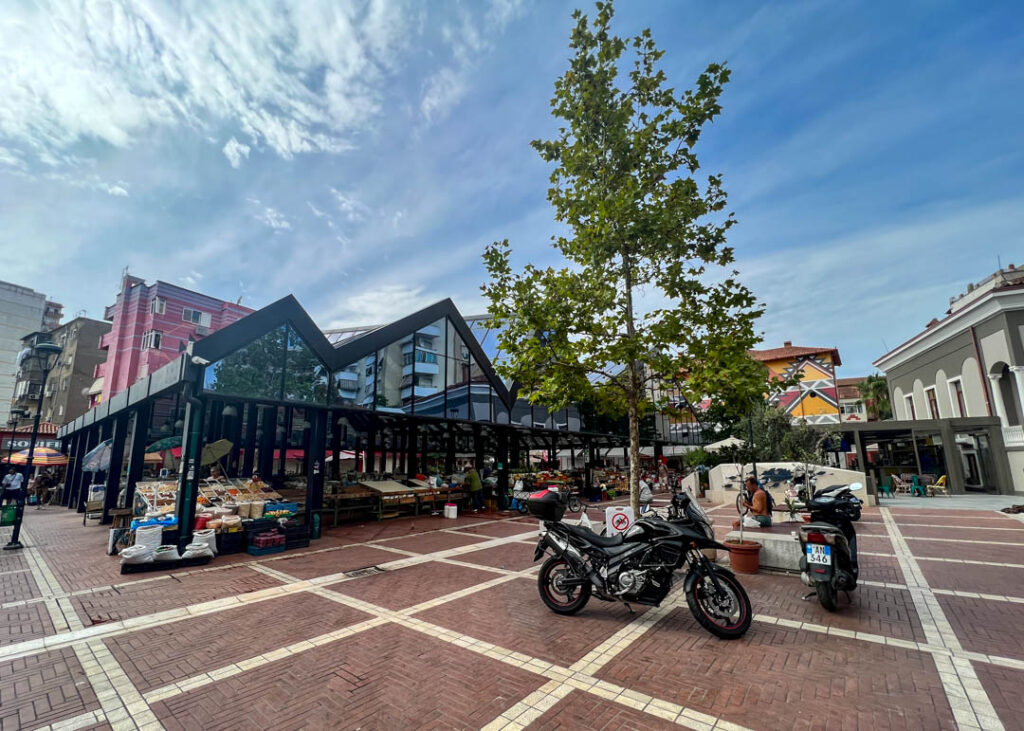
Peruse the fruits, vegetables, meat and fish as well as a few souvenirs and local handicrafts.
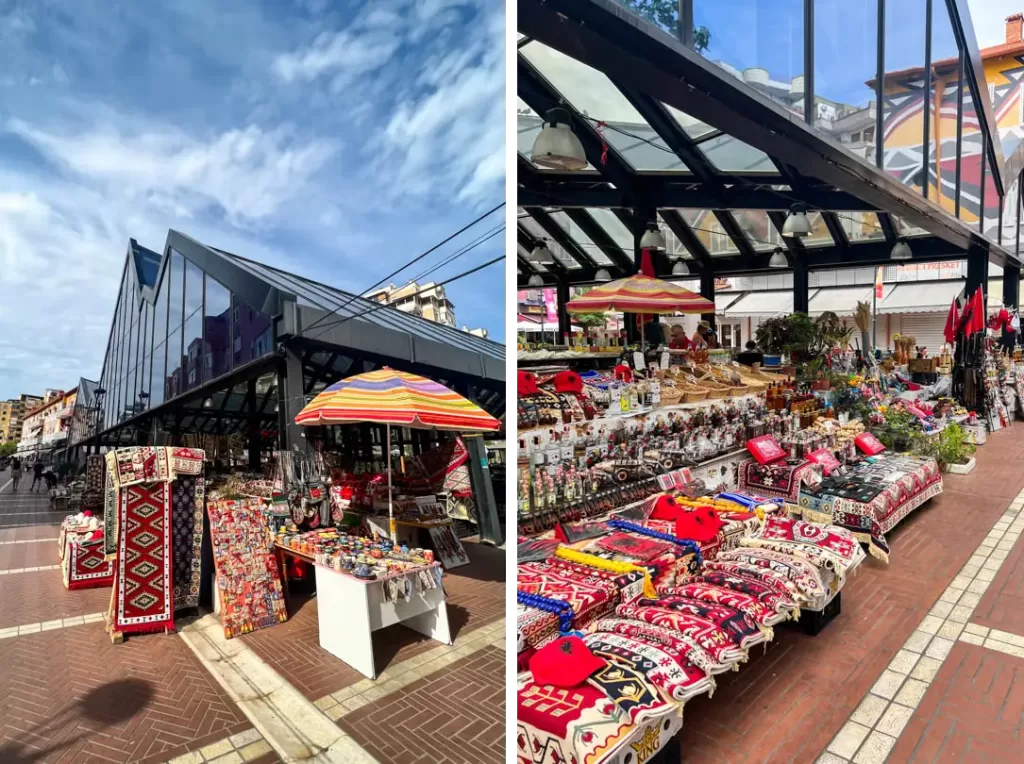
Stroll around the residential streets, you never know what you might stumble upon… wall mural? Antiqued wood carved door?
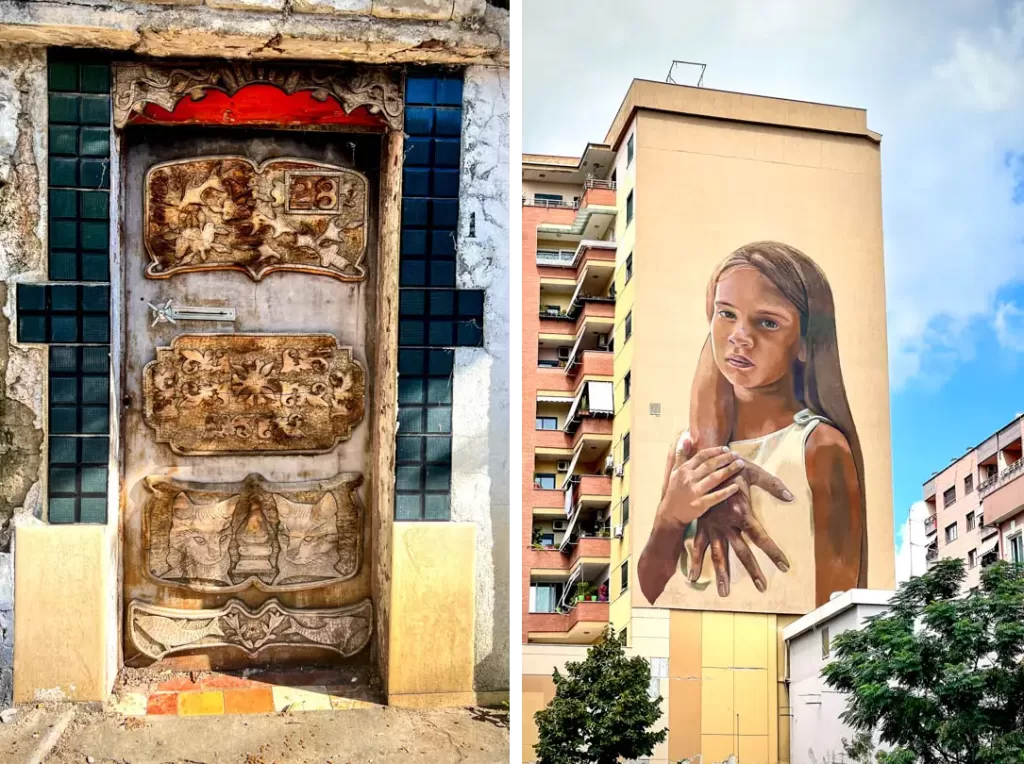
Once you start heading south, you’ll soon run into the Lana stream which flows through a concrete canal right in the center. Cross it on one of the numerous bridges to find yourself in Tirana’s coolest neighborhood – Blloku.
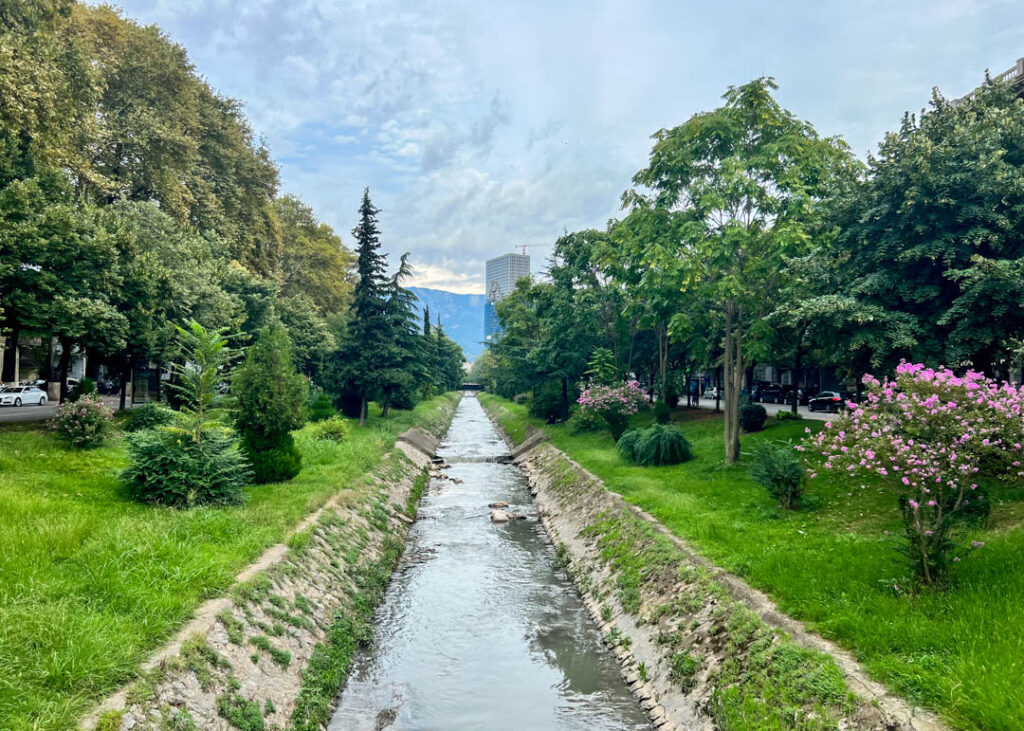
Blloku, also known as The Block, is the trendiest (and most expensive) area in Tirana overflowing with cool restaurants, bars, cafes, and shops. It’s the best place to stay as you’re still central to everything there is to see in the city while benefitting from a charming, tree-lined residential atmosphere and fewer crowds.
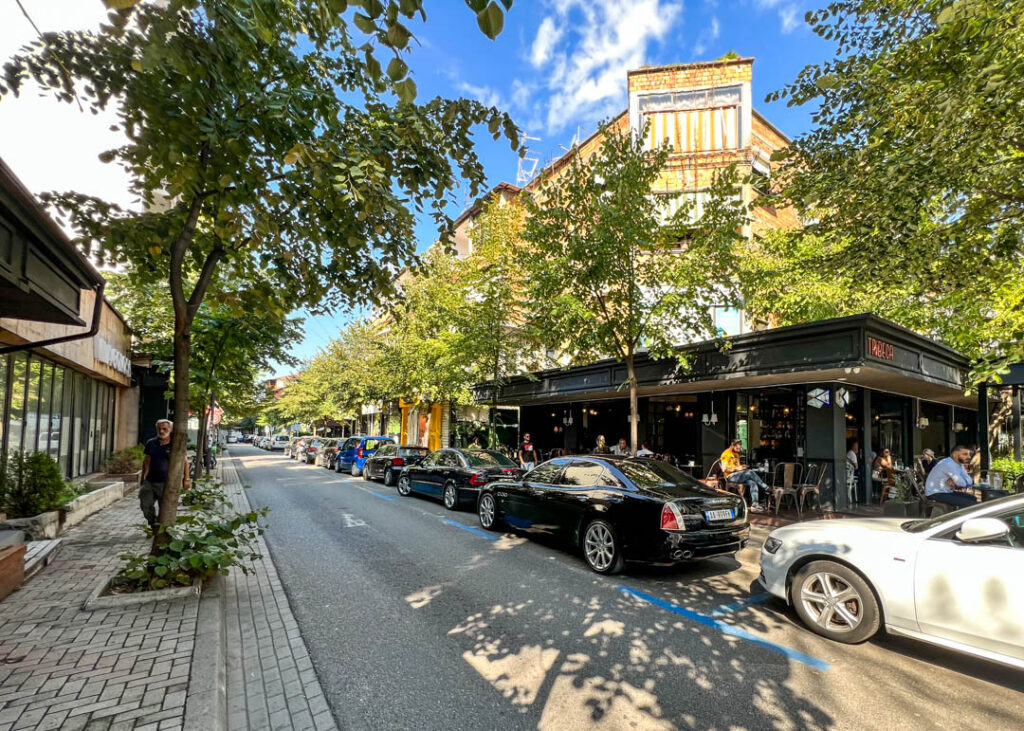
Tirana has one of the strongest café culture I’ve seen and there’s a gorgeous one on every block, no joke. Just pick any, order a strong (i.e., Turkish style or espresso) coffee and a pastry and settle in for a while, people watching.
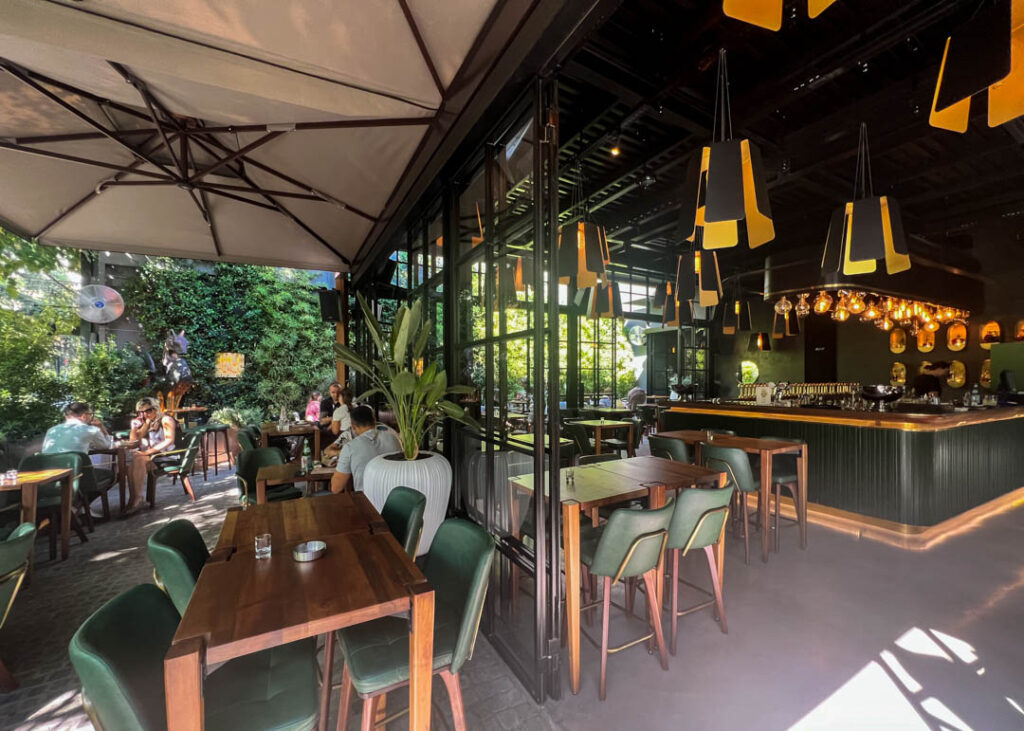
One you must seek out though is the treasure trove of Café-Museum Komiteti. This peculiar and totally charming cafe/bar was born out of the desire of the owner to store and expose his extensive collection of Albanian-made historical items of which there are thousands. It feels like you’re stepping into the coolest grandma’s house (if your grandma was a collector who also made local spirits….)
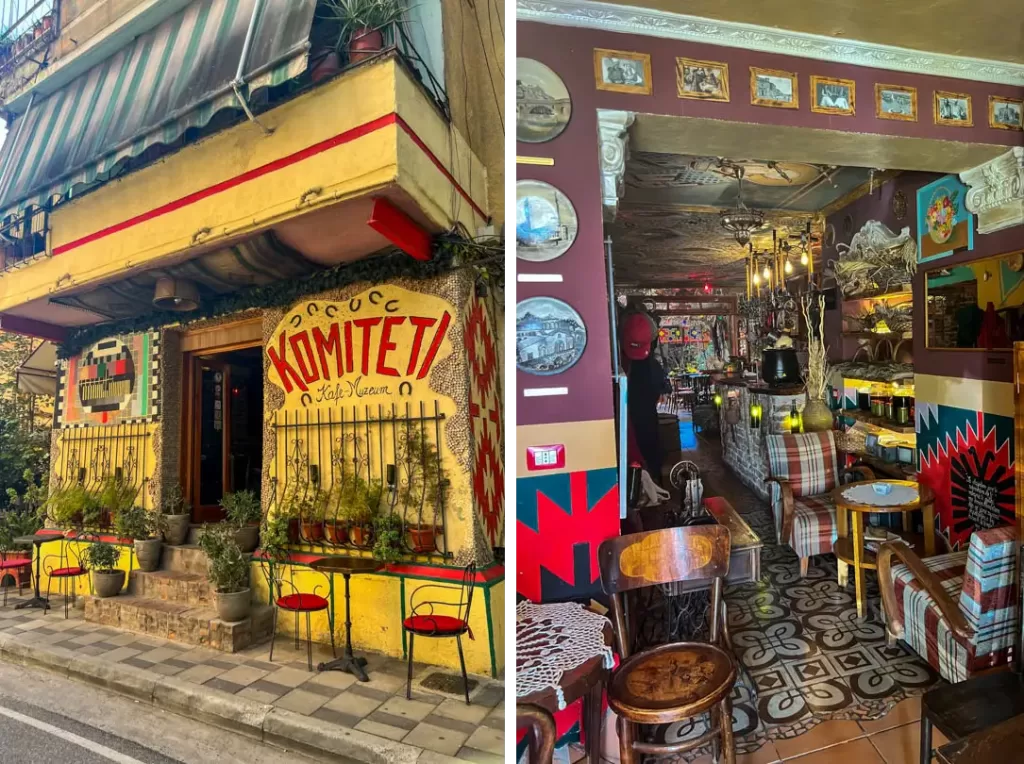
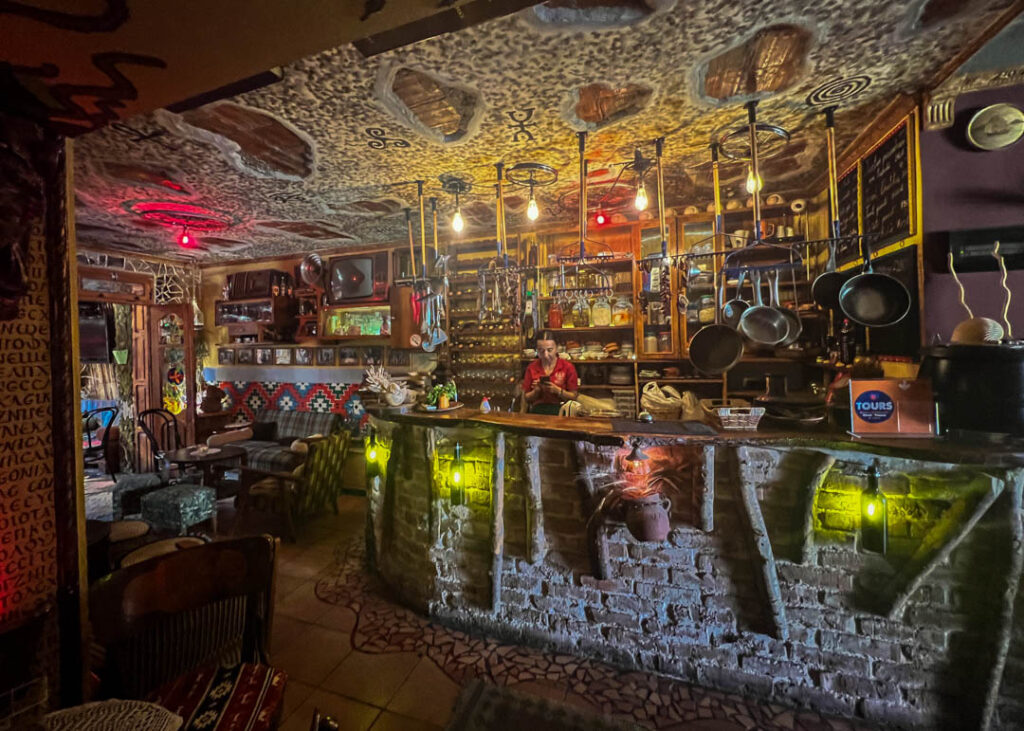
You can cozy up in any room depending on if you feel like admiring traditional costumes, antique tools, or artwork. Few places feel as warm and inviting plus you get to experience the local culture in a truly immersive way.
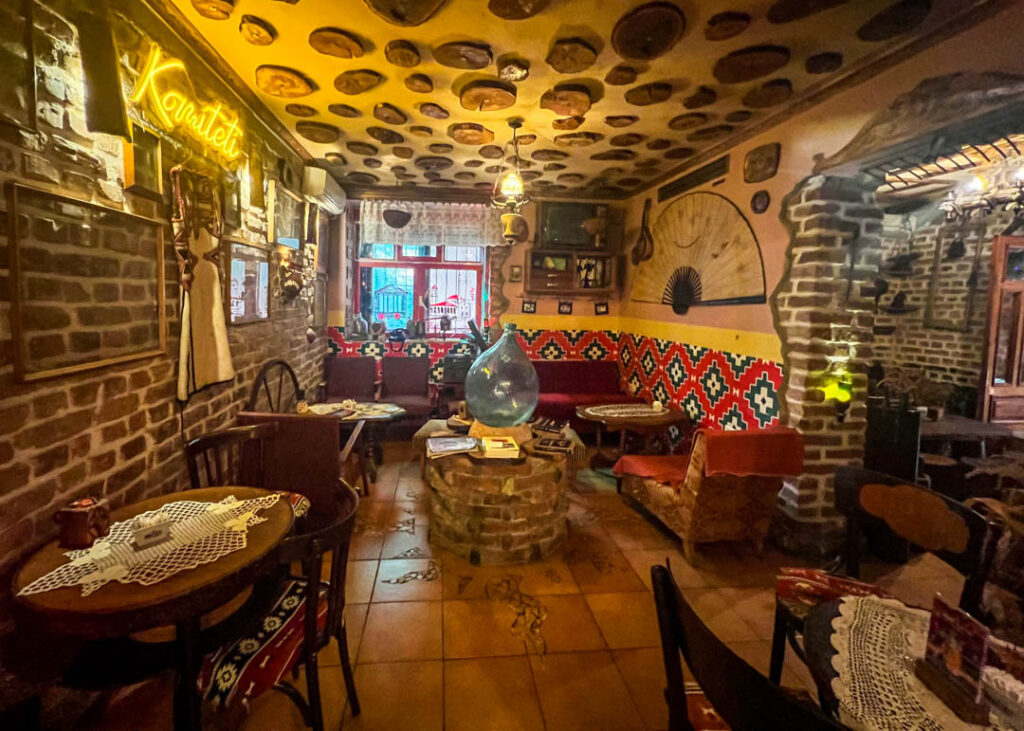
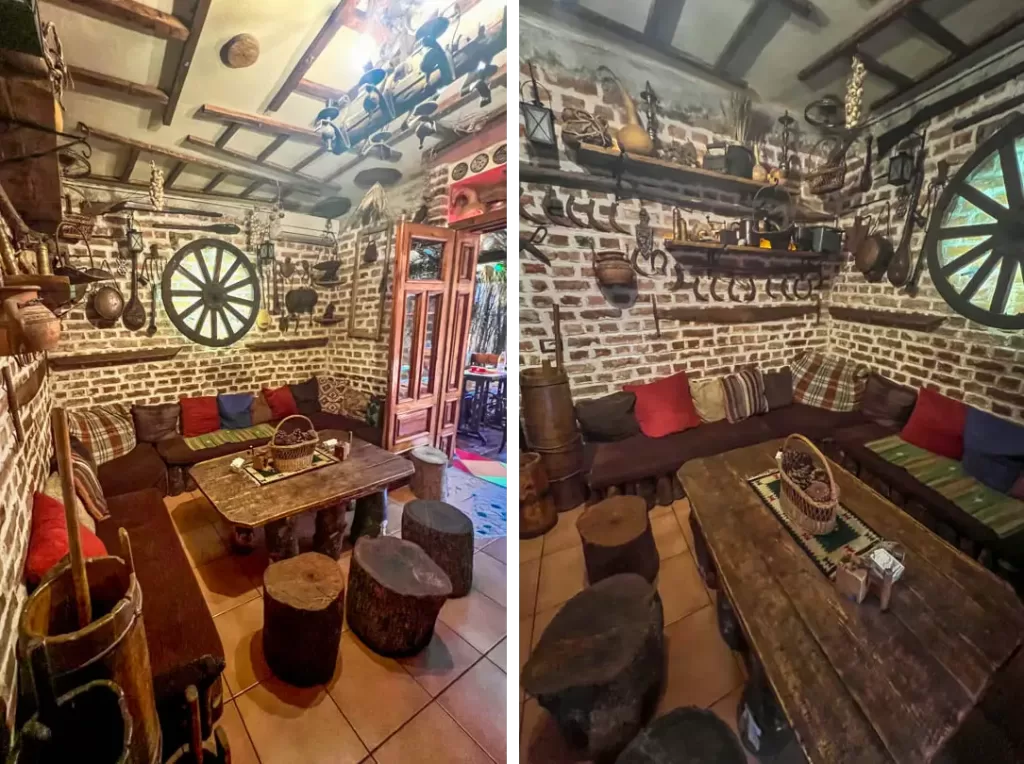
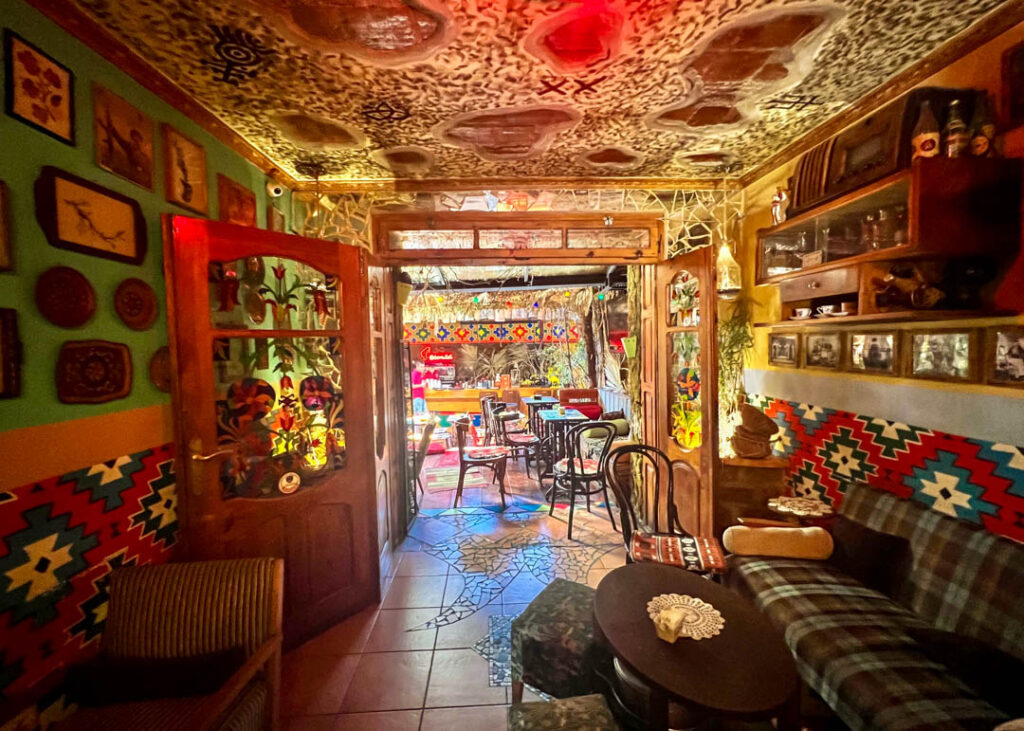
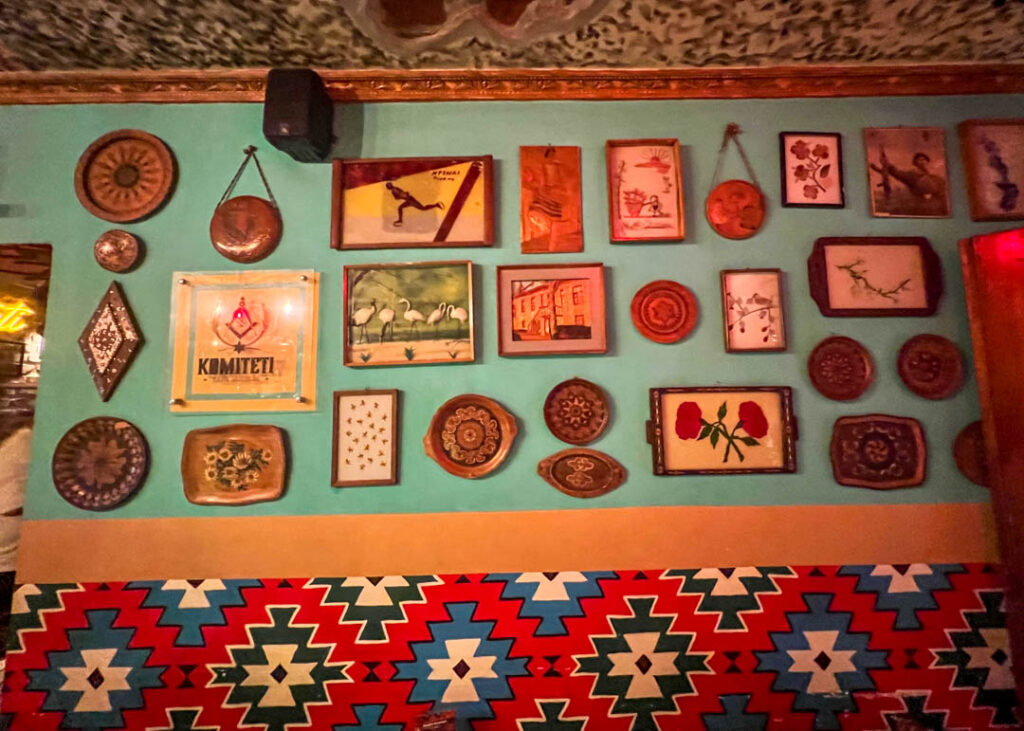
The inner courtyard is the true hangout spot especially when the light hits just right and illuminates quirky sculptures and colorful paraphernalia. One more reason to come – this is the best place to sample the widest variety of Raki, Albania’s traditional (and fiery!) spirit.
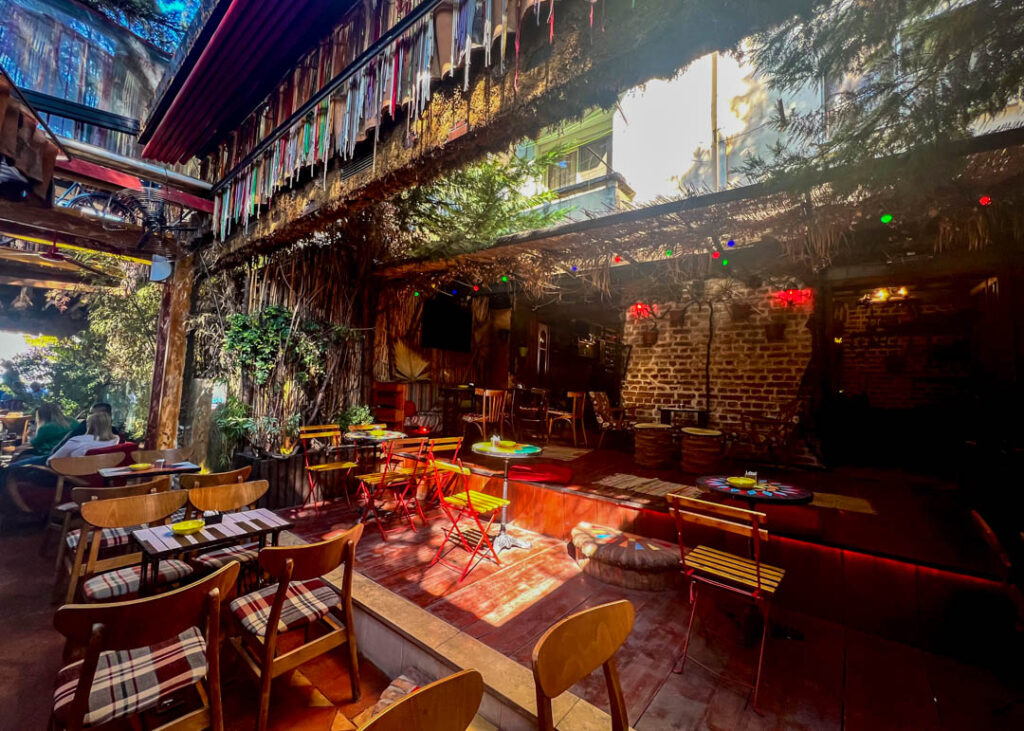
An equally cool and colorful cafe/bar (i.e., cafes are bars here meaning they’re always open from morning to evening and can serve you both caffeinated drinks or alcohol or both at any time…) is Radio Bar Tirana. Retro vibes and delicious cocktails are the draw here.
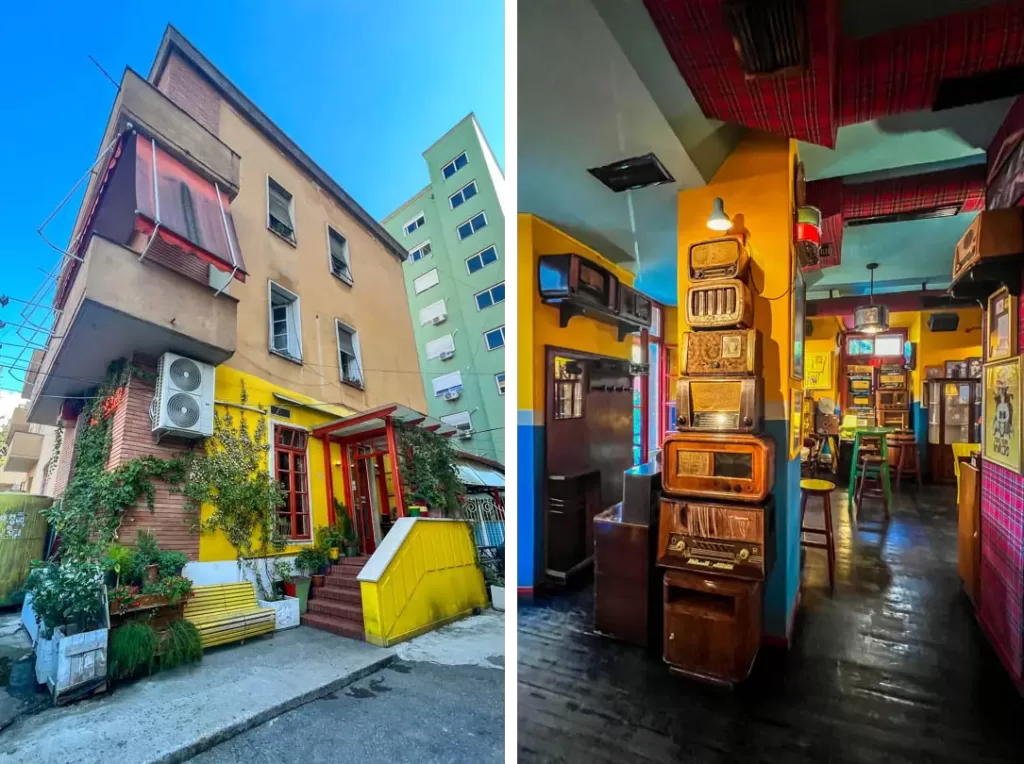
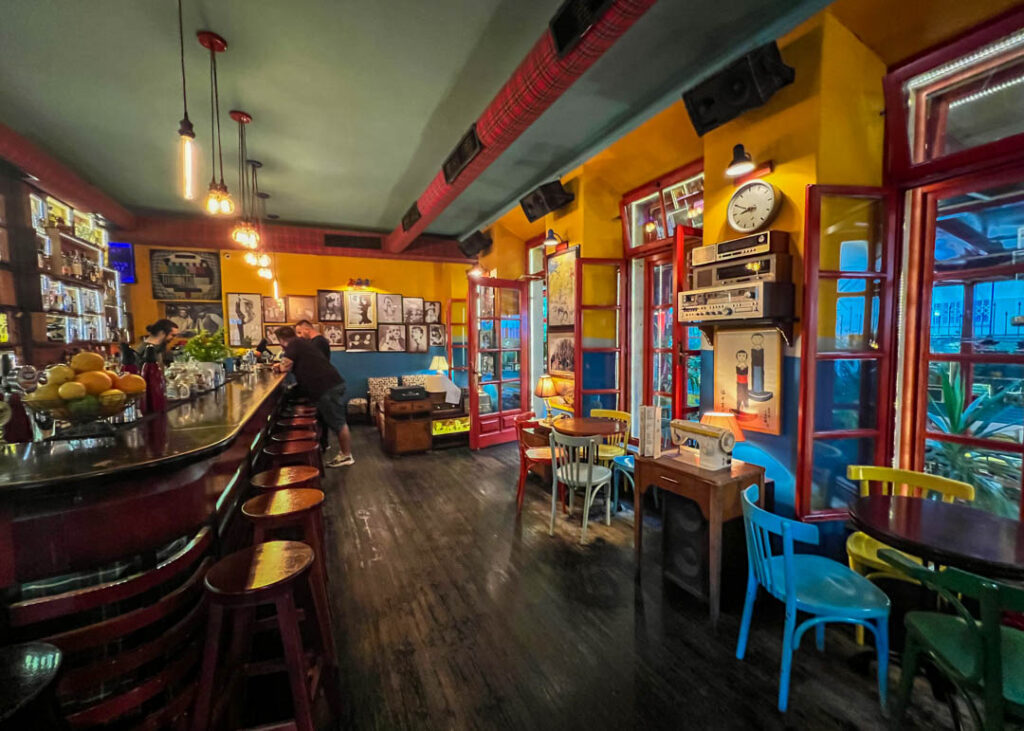
Head to the covered backyard and try one of their locally made Raki-based drinks such as this Kaipiraki – lime, fig jam, grape Raki and sparkling water.
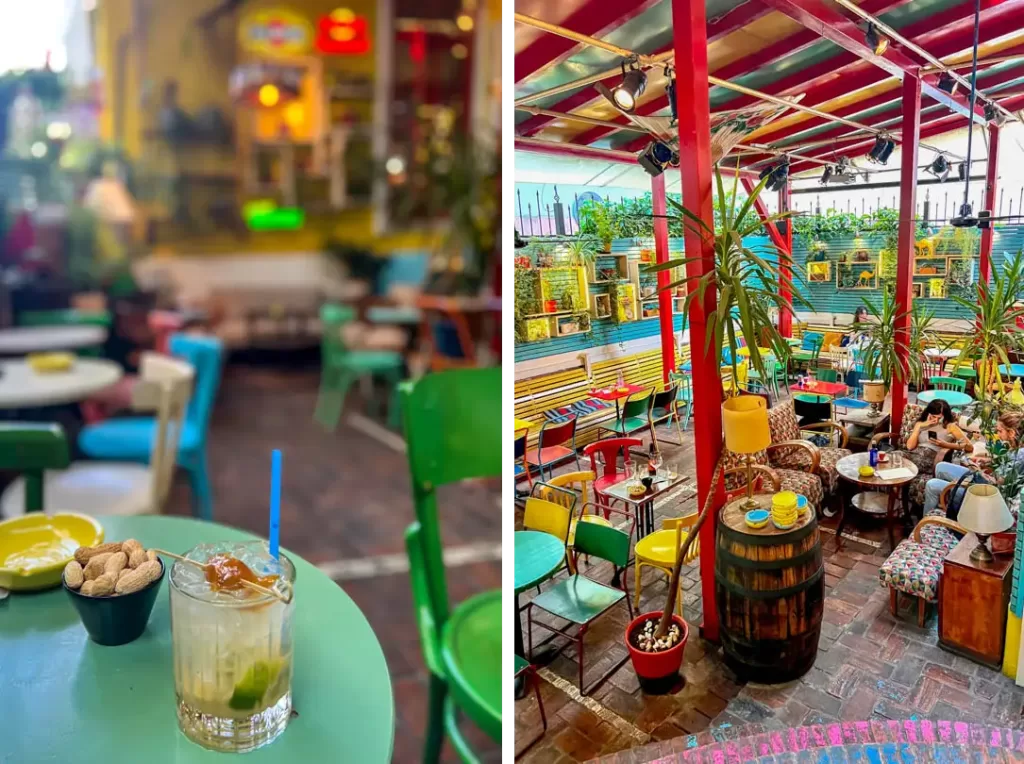
You can certainly eat beautifully at any cafes but leave some meals to try some more traditional Albanian food at restaurants such as Restaurant Piceri Era “Blloku” which I visited numerous times.
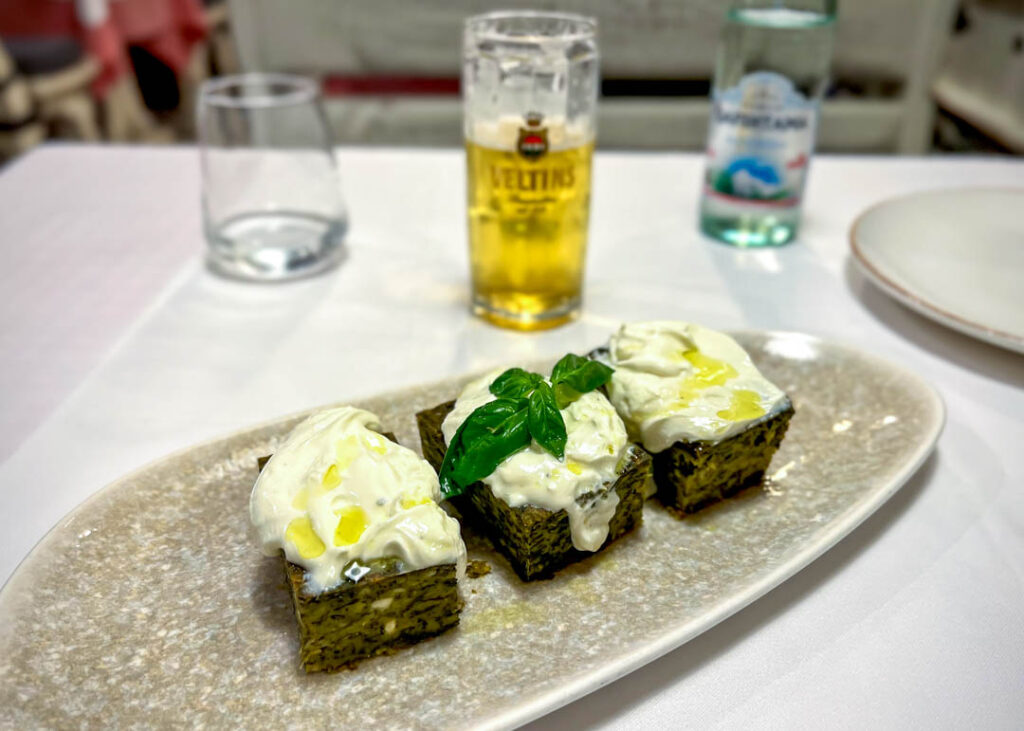
Head to Kronos Fish Restaurant for impeccable seafood on a quiet street.
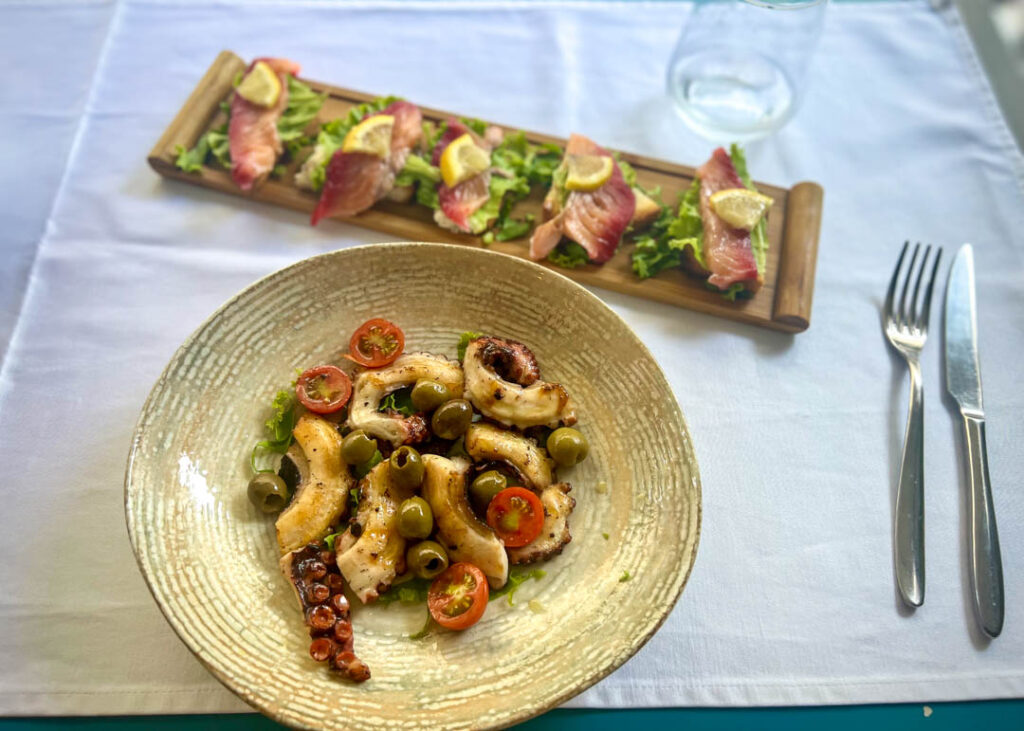
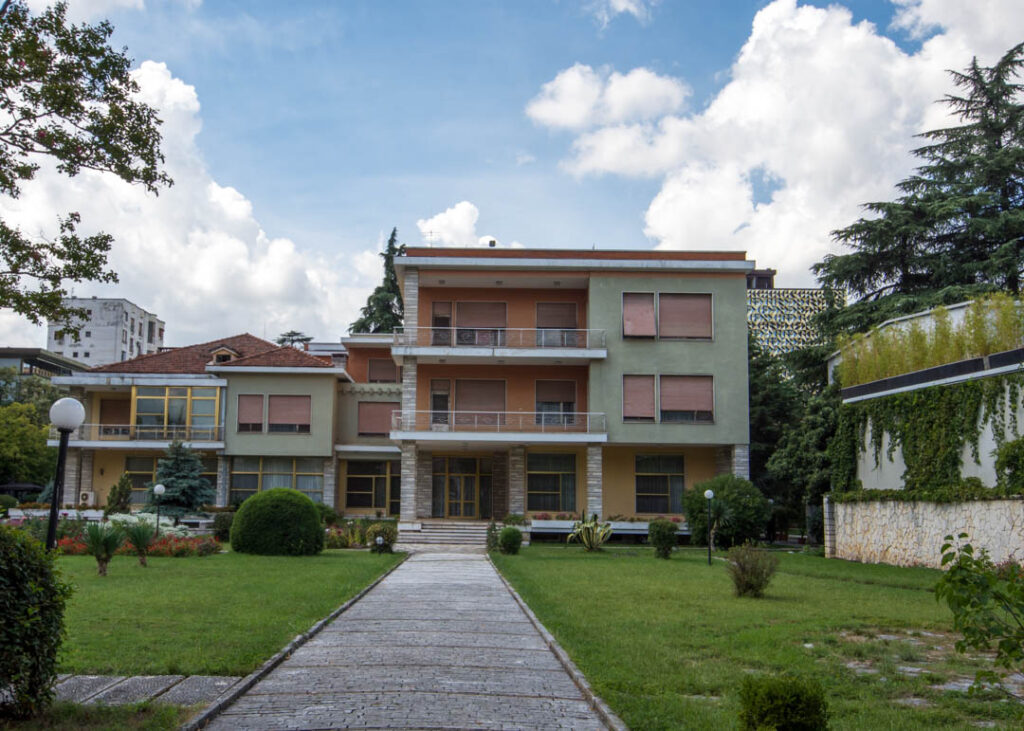
Walk a few blocks south of Blloku for a big dose of greenery in Tirana’s Grand Park, the perfect place for a post meal quiet stroll.
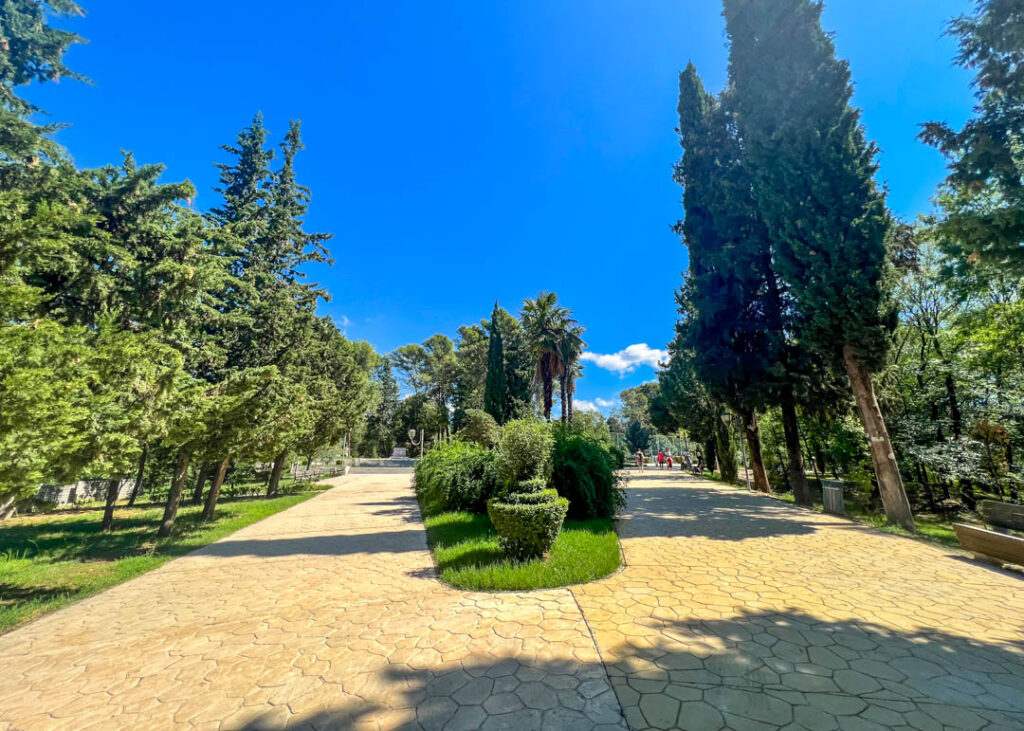
You’ll find plenty of landmarks in the vast 230 hectares including castles turned restaurants, tombs from Albanian national heroes, an outdoor theater as well as a large artificial lake.
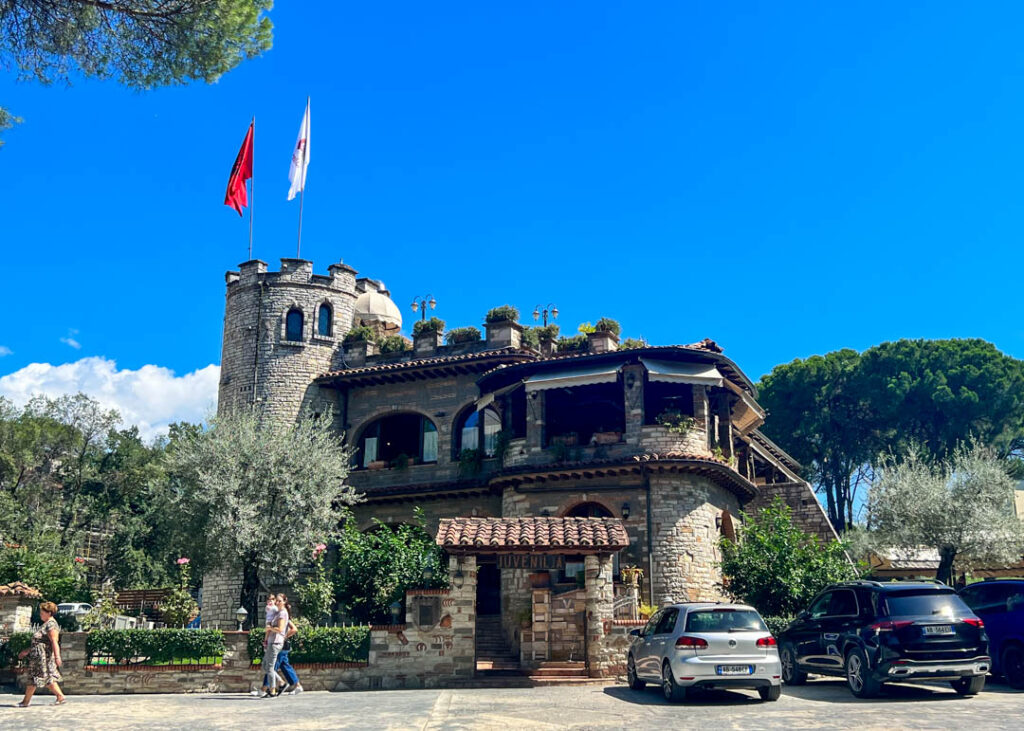
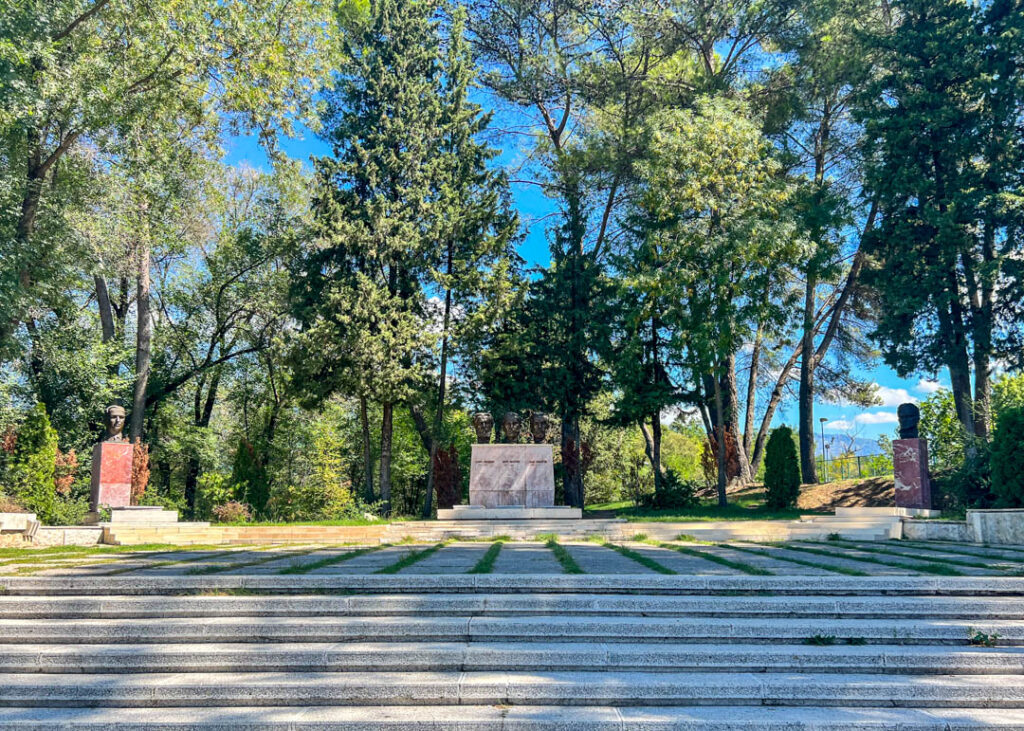
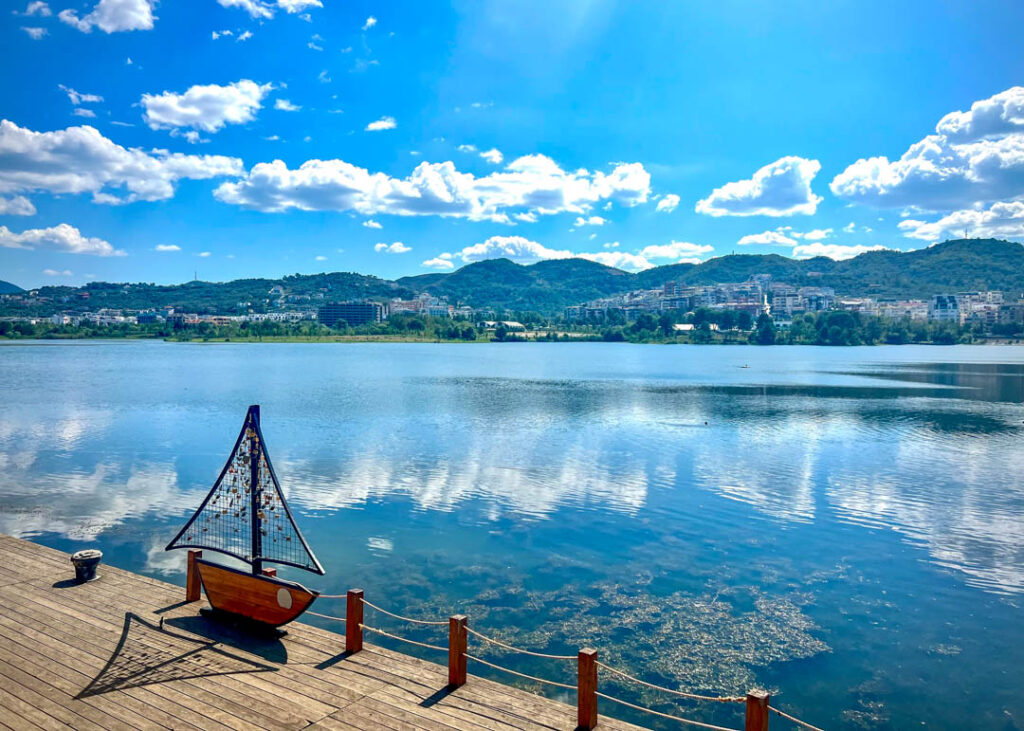
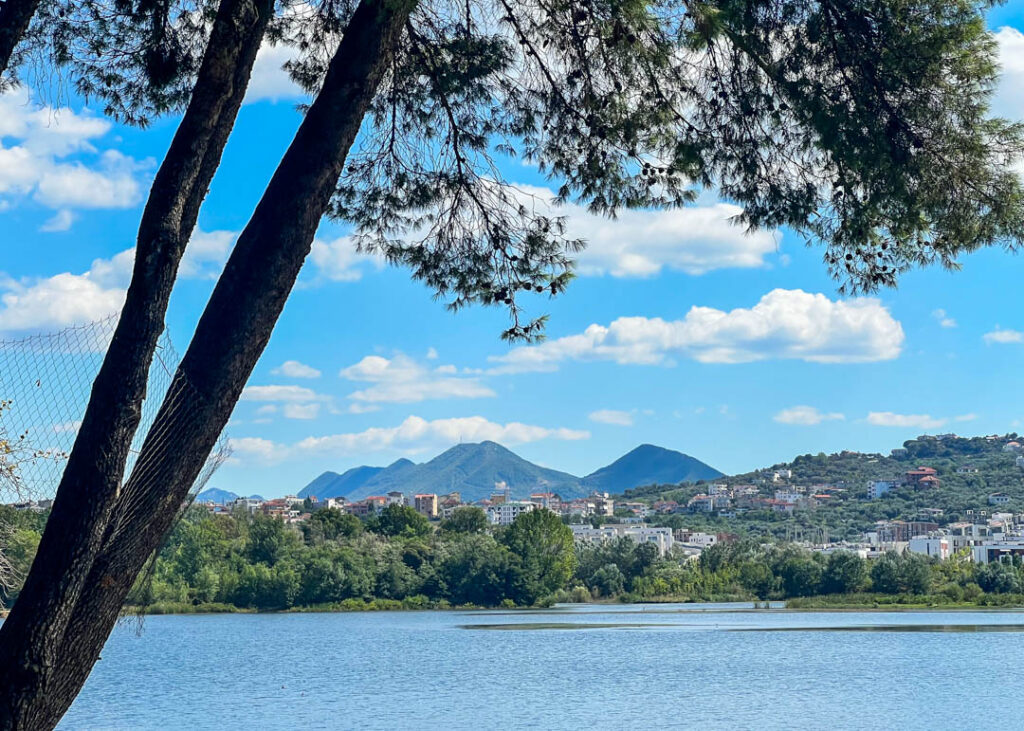
Near the north side of the lake, Mullixhiu (“The Miller”) awaits in its mountain cabin setting to introduce you to a fancier side of Albanian country cuisine.
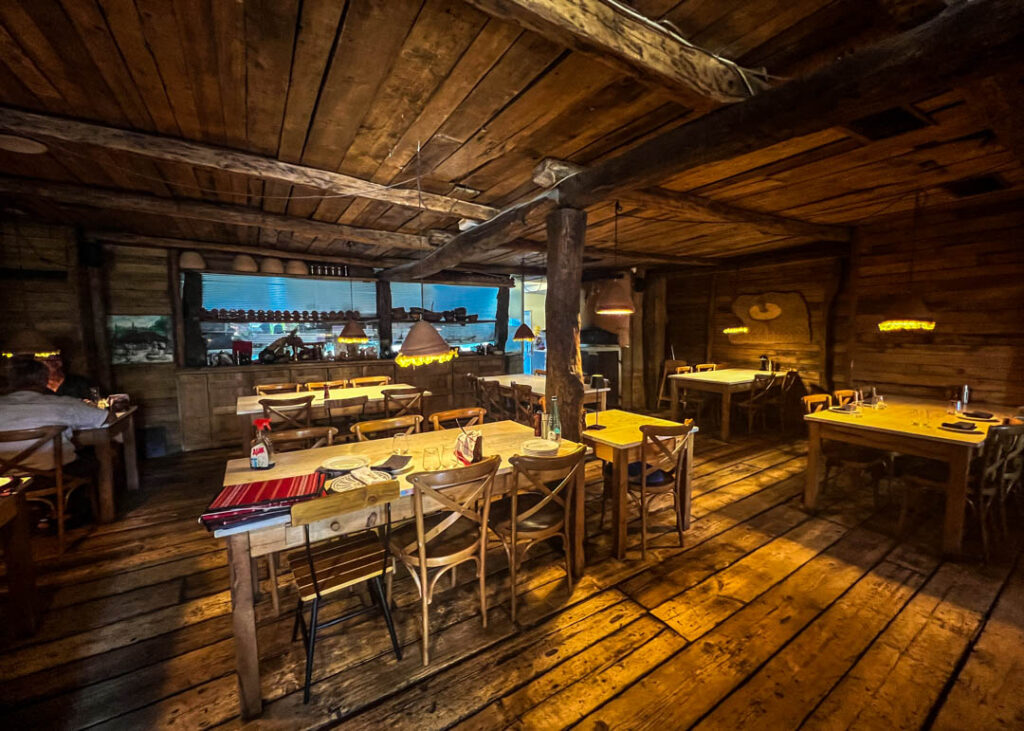
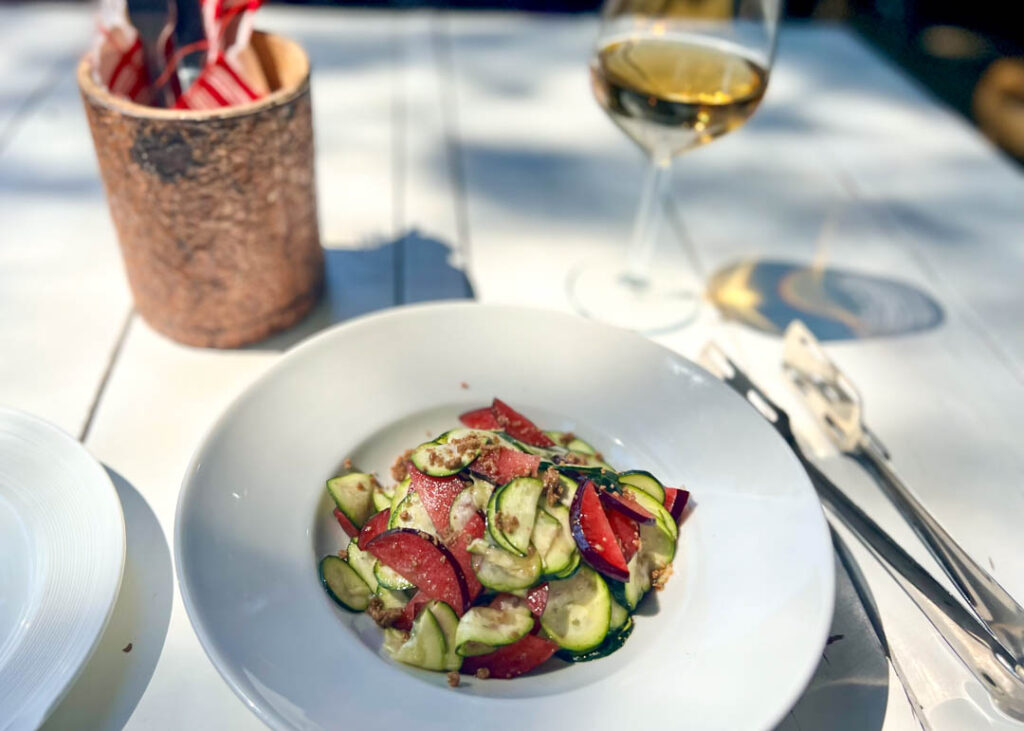
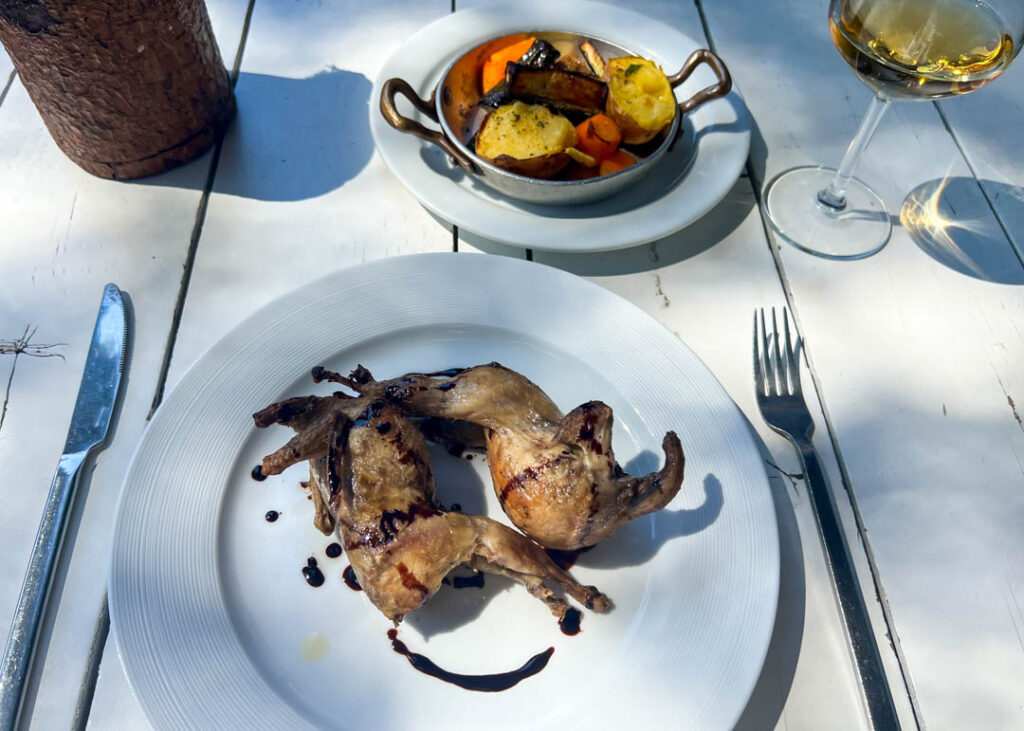
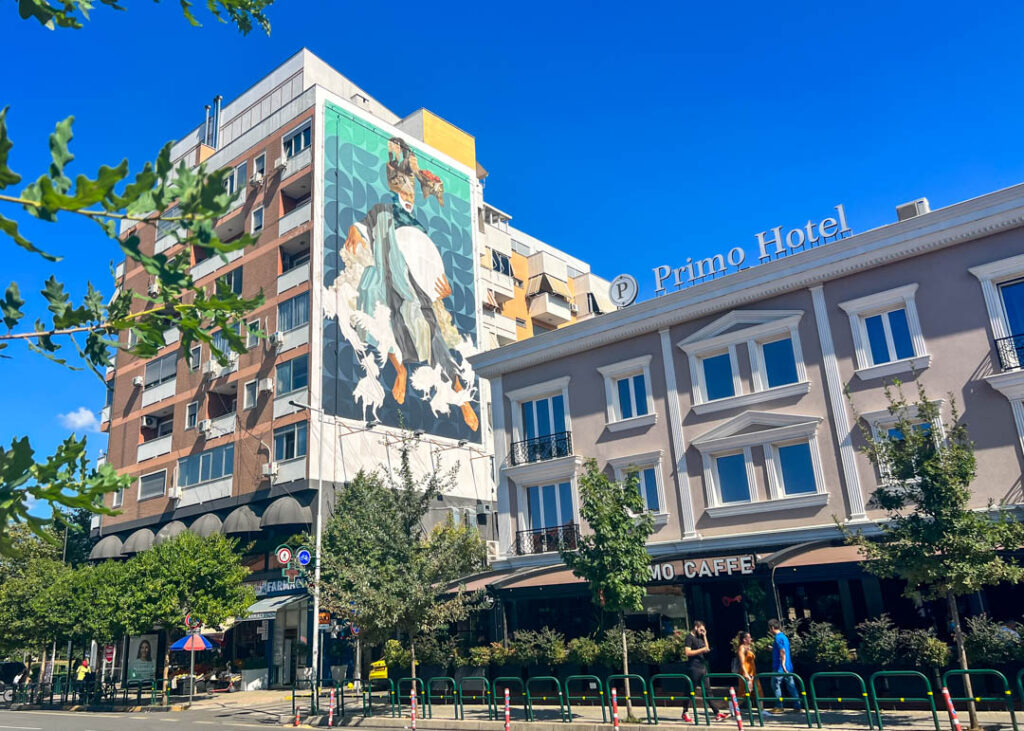
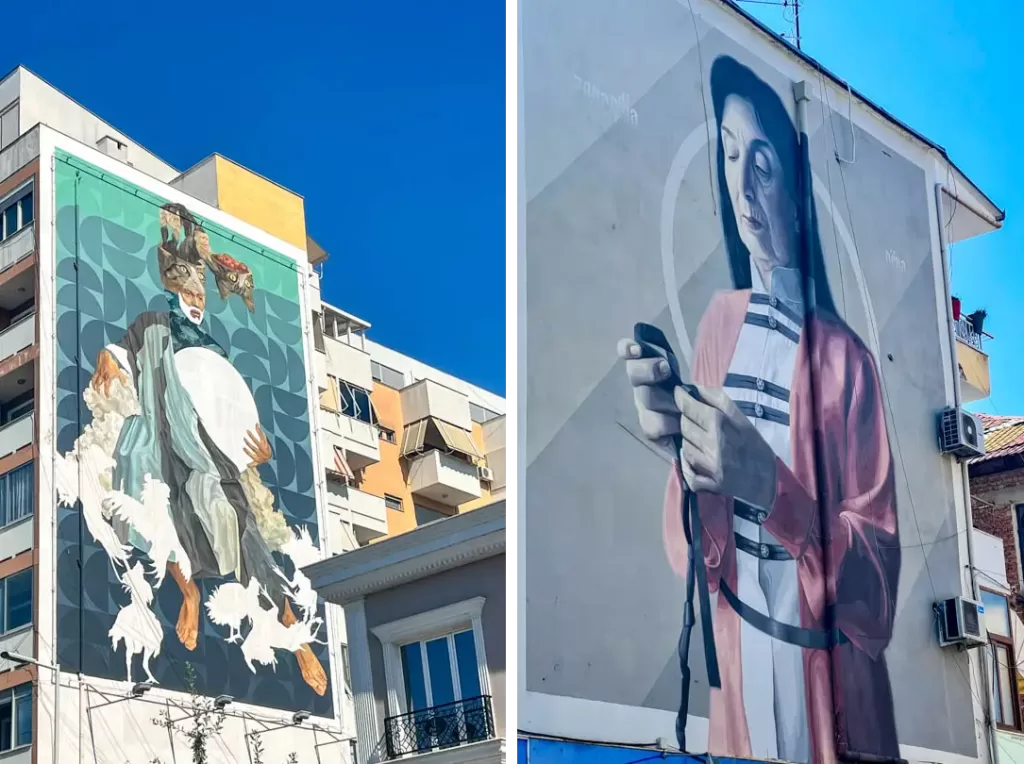
As one of the oldest wine-producing countries in the world, Albania is going through a mini wine revolution as winemakers slowly emerge from the dictatorship that crippled the industry. Now’s your chance to sample some special and unique indigenous grapes or local interpretation of international varieties before they start making their mark on the global scene. Blloku has a number of cozy wine bars like Vena Vinoteka (inside a shop) where you can taste your way through a large number of local labels with some quality nibbles. The owner lived in Italy for a while and brought back with him the tradition of the aperitivo – you’ll get some lovely complimentary snacks with your glass…
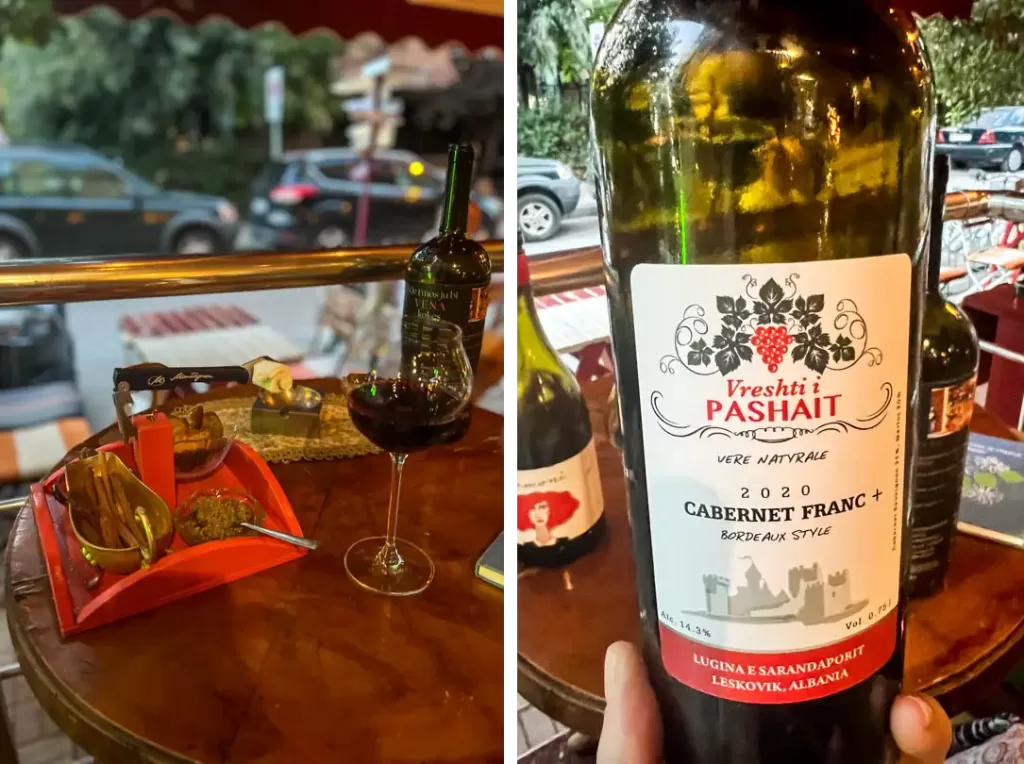
Take an evening walk in the center to capture the numerous light displays around the main attractions. Head to Rinia Park to sit by the Taiwan Fountain Pool…
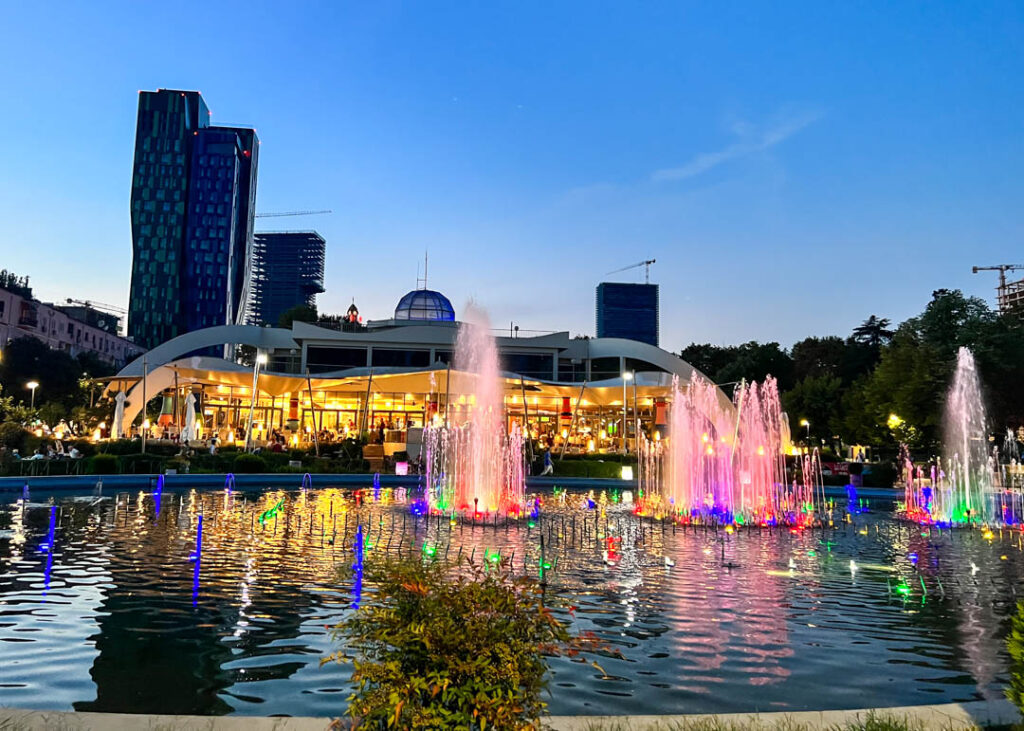
… and get a new perspective of The Cloud as it shines bright against the dark blue sky.
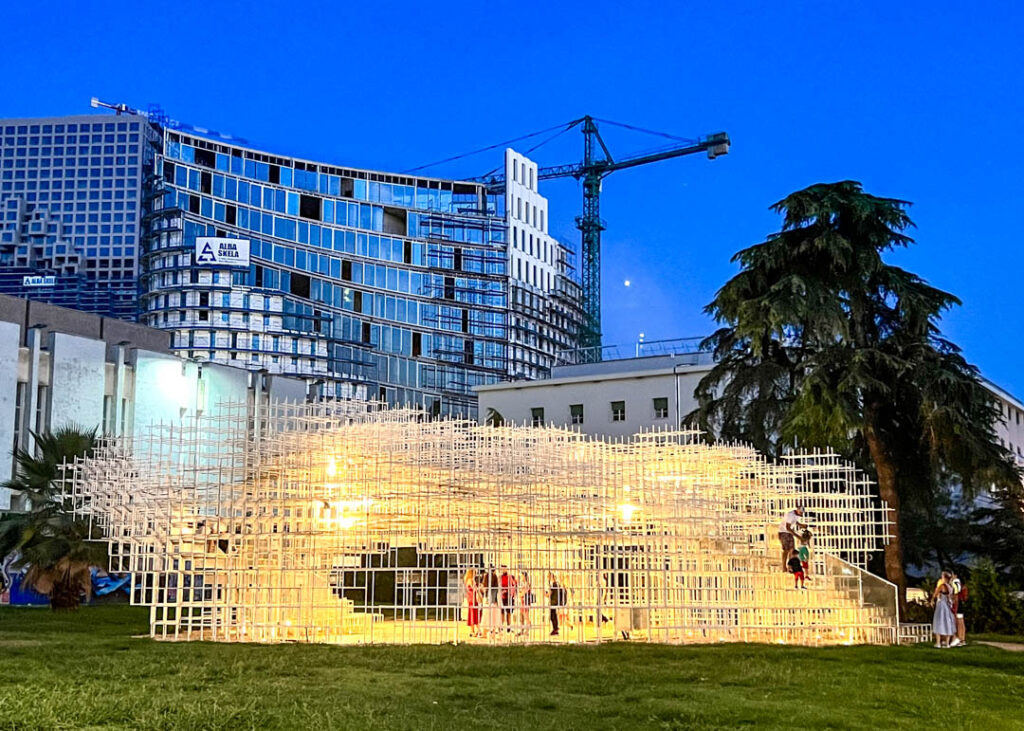
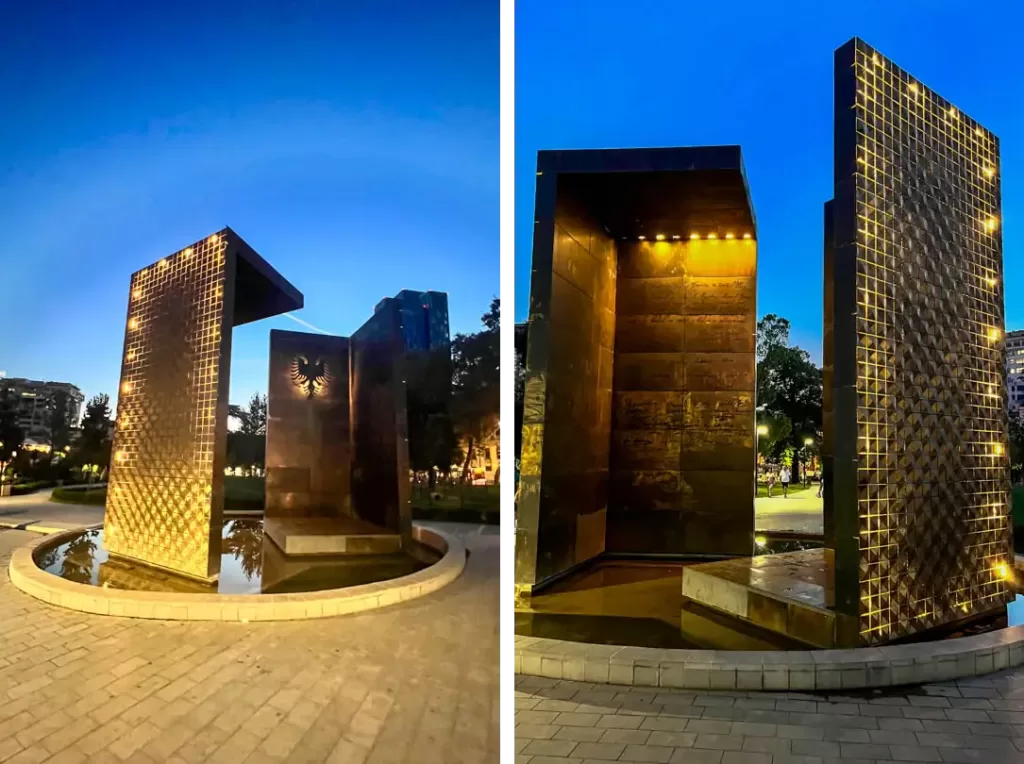
End your day right where you started at Skanderbeg Square. Watch the locals meet up on the stairs and head out to dinner, catch the mosque in a glorious glow, and stop at one more cafe for a night cap of Raki as strong as Tirana…
